Vintage Schwinn parts - Repairs and Restorations
New era Bicycles




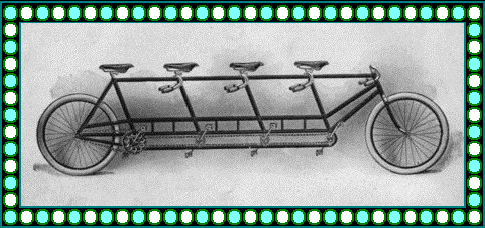
We Work On All Makes Models and Years
Specializing
in
in


1956 Schwinn 20" dx Spitfire
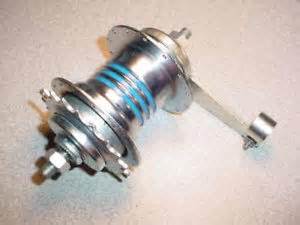
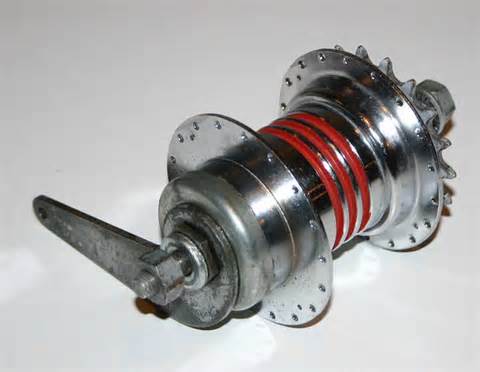

We rebuild all Bendix Schwinn 2 & 3 Speed hubs

Professional wheel lacing and custom frame building
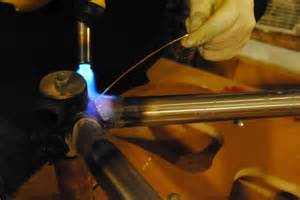





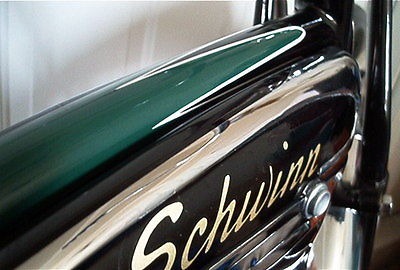
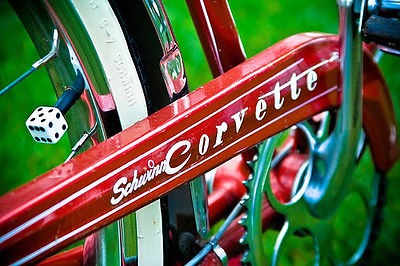
Schwinn paint restorations by experienced Artisans





$25.00
Tune-up
Special
Tune-up
Special

Bicycle Companies
Accell Group, headquartered in Heerenveen (Netherlands),
Cycleurope AB based in Stockholm (Sweden),
Derby Cycle Corporation in Cloppenburg (Germany), and
Dorel Industries in Montreal, Quebec (Canada).
24seven - UK
A-bike - UK
Abici - Italy
Accell - Dutch, owns Hercules, Staiger, Winora, Tunturi, Lapierre, Mercier, Atala, Batavus, Loekie, Koga-Miyata, and Sparta B.V.
Adler - Germany (defunct)
AIST - Belarus
ALAN - Italy
Alcyon - France (defunct)
Alldays & Onions - UK (defunct)
American Bicycle Company - USA (defunct)
American Machine and Foundry - USA (widely known as AMF) (defunct), formerly owned Roadmaster.
American Star Bicycle - USA (defunct) manufactured by the H. B. Smith Machine Company
Aprilia - Italy
Argon 18 - Canada
Ariel - England (defunct)
Atala - Italy
Author - Czech Republic
Avanti - New Zealand
Baltik vairas - Lithuania
Basso - Italy
Batavus - Netherlands
Battaglin - Italy
Benotto - Italy, México, Venezuela
Berlin & Racycle Manufacturing Company - Canada (defunct)
BH - Spain
Bianchi - Italy
Bickerton - UK (folding bikes)
Bike Friday - USA (Green Gear Cycling Co.) (folding bikes)
Bilenky - USA
Biomega - Denmark
Birdy - Germany (folding bikes)
BMC - Switzerland
Boardman Bikes - UK
Bohemian Bicycles - USA
Bontrager - USA (bought by Trek and converted into a component brand)
Bootie - UK
Bottecchia - Italy
Bradbury - UK (defunct)
Brasil & Movimento - Brazil (Branded as Sundown)
Brennabor - Germany (defunct)
Bridgestone - Japan
British Eagle - UK
Brodie Bicycles - Canada
Brompton Bicycle - UK (folding bikes)
Brunswick - USA, formerly owned Roadmaster
BSA - UK, no longer builds bicycles, TI of India builds BSA branded bikes.
Burley Design - USA (no longer make bicycles)
Calcott Brothers - UK (defunct)
Calfee Design - USA
Caloi - Brazil
Campion Cycle Company - UK
Cannondale - USA
Canyon bicycles - Germany
Carrera bicycles - UK (produced by Merida Bikes)
Catrike - USA (Recumbent)
CCM - Canada
Centurion - Japan
Cervélo - Canada
Chater-Lea - UK
Chicago Bicycle Company - USA (defunct)
CHUMBA - USA
Cilo - Switzerland
Cinelli - Italy
Clark-Kent - USA (defunct)
Claud Butler - UK
Clément - France (defunct)
Co-Motion Cycles - USA
Coker - USA
Colnago - Italy
Columbia Bicycles - USA
Corima - France
Cortina Cycles - USA
Coventry-Eagle- UK (defunct - see Falcon Cycles)
Cube - Germany
Currys - UK, no longer makes bicycles
Cycle Force Group - USA
Cycles Devinci - Canada
Cycleuropa Group - Sweden, manufactures such brands as: Bianchi, Crescent, DBS, Everton, Gitane, Kildemoes, Legnano, Micmo, Monark, Puch, Spectra, and Cyclepro.
Cyfac - France
Dahon - USA / China
Dawes Cycles - UK
Demorest - USA (restructured as Lycoming Foundry and Machine Company and discontinued bicycle manufacturing)
Den Beste Sykkel Better known as DBS - Norway
Derby Cycle - Germany, owns Kalkhoff, Focus, Nishiki, Rixe, Raleigh and Univega
De Rosa - Italy
Cycles Devinci - Canada
Di Blasi Industriale - Italy
Diamant - Norway. Unrelated brand of same name from Germany, owned by Trek
Diamondback Bicycles - USA
Dolan Bikes - UK
Dorel Industries - Canada, owns Pacific Cycle and markets under brand names including Cannondale, Iron Horse, Schwinn, Mongoose, Roadmaster, and GT.
Dunelt - UK (defunct)
Dynacraft - USA, owns Magna and Next
Eagle Bicycle Manufacturing Company - USA (defunct)
Eddy Merckx Cycles - Belgium
Electra Bicycle Company - USA (Owned by Trek Bicycle Company)
Ellis Briggs - UK
Ellsworth Handcrafted Bicycles - USA
Emilio Bozzi - Italy (acquired by Bianchi)
Enigma Titanium - UK
Excelsior - UK (defunct)
Falcon Cycles - UK
Fat City Cycles - USA (defunct)
Felt - USA
Fleetwing -USA (defunct)
Flying Pigeon - China
Flying Scot - Scotland
Focus Bikes - Germany. Part of Derby Cycle
Foffa Bikes - UK
Cycles Follis - France (defunct)
Folmer & Schwing - USA (defunct)
Fondriest - Italy
Fram - Sweden (defunct)
Freddie Grubb - UK
Fuji - USA (owned by Advanced Sports, Inc.)
Gary Fisher - USA (owned by TREK)
Gazelle - Netherlands
Gendron Bicycles - USA
Genesis - UK
Gepida - Hungary
Giant Manufacturing - Taiwan
Gimson - Spain (defunct)
Gitane - France
Gladiator Cycle Company - France (defunct)
Gnome et Rhône - France (defunct)
GoCycle - UK
Gormully & Jeffery - USA (defunct)
Gräf & Stift - Austria (defunct)
GT Bicycles - USA
Guerciotti - Italy
Gunnar - USA
Harley-Davidson - USA, 1917-1923.
Haro Bikes - USA, owns the Masi brand.
Harry Quinn - UK (defunct)
Hase bikes - Germany
Head - Norway, managed by SykkelSport Engros
Heinkel - Germany (defunct)
Helkama - Finland
Henley Bicycle Works - USA (defunct)
Hercules - UK (defunct)
Hercules - Germany
Hero Cycles Ltd - India
René Herse - France
Hetchins - UK
Hillman - UK (defunct)
Hoffman BMX Bikes
Hoffmann - Germany (defunct)
Holdsworth - UK
Huffy - USA
Humber - UK (defunct)
Hurtu - France (defunct)
Husqvarna - Sweden (no longer a bicycle manufacturer)
Ibis - USA
Ideal Bikes - Greece
Indian - USA (bought by Polaris)
IFA - East Germany (defunct)
Independent Fabrication - USA
Iride - Italy
Iron Horse Bicycles - USA (Owned by Dorel)
Islabikes – UK
Italvega - USA (defunct) Precursor to Univega
Itera - Sweden (defunct)
Ivel Cycle Works - UK (defunct)
Iver Johnson - USA (defunct)
Iverson - USA (defunct)
Jan Janssen - The Netherlands
JMC Bicycles - USA (defunct)
Jamis Bicycles- USA
Karbon Kinetics Limited - UK
K2 Sports - USA
Kent - USA
Kenzel - Slovakia
Kestrel USA - USA (owned by Advanced Sports International)
Kettler - Germany
KHS - Taiwan and USA
Kia - ROK, no longer produces bicycles
Kinesis Industry - Taiwan and USA, Kenesis produces its own bikes as well as brands manufactured by Kinesis include Diamondback Bicycles, Felt Bicycles, GT Bicycles, Schwinn, Jamis, K2, Raleigh, Trek, and Kona
Klein - USA (Discontinued brand owned by Trek)
Koga Miyata - Holland
Kogswell Cycles - USA
Kona - USA
Kronan - Sweden
Kross - Poland
KTM - Austria
Kuota - Italy
Kuwahara - Japan (Okinawa), is/was a private label bike manufacturer
Krave - USA
Laurin & Klement - Austria-Hungary/Czech republic
Lapierre - France
LeMond - USA (Discontinued brand owned by Trek)
Alexander Leutner & Co. — Russia (defunct)
Litespeed - USA
Look - France
Louison Bobet - France (defunct)
Lotus, USA (defunct)
Magna - USA
Malvern Star - Australia
Marin Bikes - USA
Masi Bicycles - USA
Matchless - UK (defunct)
Matra - France
Melon Bicycles - USA
Mercian Cycles - UK
Merida Bikes - Taiwan
Merlin - USA
Merckx - Belgium
Miele bicycles - Canada
Milwaukee Bicycle Co. - USA
Minerva - Belgium (defunct)
Miyata - Japan
Mochet - France (defunct)
Monark - Sweden/Brazil/Peru
Mondia - Switzerland
Mongoose - USA
Montague - USA
Moots Cycles - CO, USA
Moser Cicli - Italy
Motobécane - France
Moulton - UK
Mountain Equipment Co-op - Canada
Murray - USA
Muddy Fox - UK (other brand: Silver Fox)
Nagasawa - Japan
National - Japan, precursor to Panasonic
Neil Pryde - Hong Kong
Neobike - Taiwan
New era Bicycles USA 5-2014 R.R.M.
NEXT - USA
Nishiki - U.S. brand
Norco - Canada
Norman Cycles - UK (defunct)
Novara - USA
NSU - Germany
Nymanbolagen - Sweden
Opel - Germany (no longer makes bicycles)
Orange Mountain Bikes - UK
Orbea - Spain
Órbita - Portugal
Orient Bikes - Greece
Pacific Cycle - USA, was acquired by Dorel Industries in 2004. Owns GT, Mongoose, Murray, Roadmaster, and Schwinn brands
Pacific Cycles - ROC, owns Birdy,
Panasonic - Japan, successor to National
Pashley Cycles - UK
Pedersen bicycle - UK
Peugeot - France
Phillips Cycles - UK
Phoenix - China
Pierce Cycle Company - USA (defunct)
Pinarello - Italy
Planet X Bikes - UK, On-One, Titus, Planet X
Pocket Bicycles - USA
Pogliaghi - Italy
Pope Manufacturing Company - USA (defunct)
Premier - UK (defunct)
Procycle Group - Canada, owns the Rocky Mountain Bicycles, Miele, also owns but not longer produces the Oryx, Mikado, VeloSport, Balfa, CCM, Peugeot brands.
Prophete - Germany
Puch - Austria
Quadrant Cycle Company - UK (defunct)
Quality - USA and Taiwan, owns Salsa Cycles and Surly Bikes.
Quintana Roo - USA
R+E Cycles - USA
Radio Flyer - USA
Rabasa Cycles - Spain
Raleigh - UK. Part of Derby Cycle
Rambler - USA (defunct), made by Gormully & Jeffery
Rans Designs - USA
Razor - USA
Redline bicycles - USA
Rhoades Car - USA (quadracycles)
Ridgeback - UK
Ridley - Belgium
Riese und Müller - Germany
RIH - Netherlands
Riley Cycle Company - UK (defunct)
Rivendell Bicycle Works - USA
Roadmaster - USA
Roberts Cycles - UK
Robin Hood - UK
Rocky Mountain Bicycles - Canada
Romet - Poland - A brand from the company Arkus & Romet Group
Ross - USA
Rover Company - UK
Rowbike - USA
Rudge-Whitworth - UK
Samchuly - Korea
Santa Cruz Bikes - USA
Santana Cycles - USA (only makes tandem bicycles)
Saracen Cycles - UK
Scania - Sweden (no longer makes bicycles)
Schwinn Bicycle Company - USA
SCOTT Sports - Switzerland
Serotta - USA
Seven Cycles - USA
Shelby Cycle Company - USA (defunct)
Shimano - JAPAN
Simson - Germany (acquired by Industrieverband Fahrzeugbau, now defunct)
Sinclair Research - UK
Singer - UK (defunct)
Sohrab - Pakistan
Solé Bicycle Co. - USA
Solex - France (defunct)
Solifer - Finland
SOMA Fabrications - USA
Somec - Italy
Sparta B.V. - Dutch
Specialized - USA
Speedwell bicycles - Australia (defunct)
Star Cycle Company - UK
Stearns - USA (defunct)
Stelber Cycle Corp - USA
Stella - France
Sterling Bicycle Co. - USA
Steyr - Austria (defunct)
Strida - UK
Sun Cycle & Fittings Co. - UK (defunct)
Sunbeam - UK (defunct)
Surly Bikes - USA
Suzuki - Japan
Swift Folder - USA
Swing Bike - USA (defunct)
Tern - Taiwan
Terrot - France (defunct)
Thomas - USA (defunct)
Thorn Cycles - UK
Time - France
Titus - USA (defunct, since absorbed into Planet X Bikes)
Tube Investments - UK (owned British Cycle Corporation) No longer manufacturers bicycles
Torker - USA
Transition Bikes - USA
Trek Bicycle Corporation - USA, also Klein Bikes, LeMond Racing Cycles (both discontinued) and Gary Fisher Bikes
Triumph Cycle - UK (Owned by Raleigh Bicycle Company)
Triumph (TWN) - Germany
Tunturi - Finland
Turner Suspension Bicycles - USA
UMF (United Merida Freeriders) - Taiwan. Owned by Merida Bikes
Univega - US. Part of Derby Cycle
Urago - France (defunct)
Valdora - USA
Van Dessel Sports - USA
Velomotors - Russia
VéloSoleX - France (Velosolex America markets the VELOSOLEX worldwide.)
Velo Vie - USA
Victoria - Germany
Villiger - Switzerland, part of Trek
Villy Customs - USA
Vindec - UK
Vitus - France
Wanderer - Germany (defunct)
Waterford Precision Cycles - USA,
Wilderness Trail Bikes - USA
Wilier Triestina - Italy
Witcomb Cycles - UK
Worksman Cycles - USA, also imports Atlantic Coast Cruiser brand.
Wright Cycle Company - USA (defunct)
Xootr - USA
Yamaguchi Bicycles - USA
Yamaha - Japan
Yeti Cycles - USA
Accell Group, headquartered in Heerenveen (Netherlands),
Cycleurope AB based in Stockholm (Sweden),
Derby Cycle Corporation in Cloppenburg (Germany), and
Dorel Industries in Montreal, Quebec (Canada).
24seven - UK
A-bike - UK
Abici - Italy
Accell - Dutch, owns Hercules, Staiger, Winora, Tunturi, Lapierre, Mercier, Atala, Batavus, Loekie, Koga-Miyata, and Sparta B.V.
Adler - Germany (defunct)
AIST - Belarus
ALAN - Italy
Alcyon - France (defunct)
Alldays & Onions - UK (defunct)
American Bicycle Company - USA (defunct)
American Machine and Foundry - USA (widely known as AMF) (defunct), formerly owned Roadmaster.
American Star Bicycle - USA (defunct) manufactured by the H. B. Smith Machine Company
Aprilia - Italy
Argon 18 - Canada
Ariel - England (defunct)
Atala - Italy
Author - Czech Republic
Avanti - New Zealand
Baltik vairas - Lithuania
Basso - Italy
Batavus - Netherlands
Battaglin - Italy
Benotto - Italy, México, Venezuela
Berlin & Racycle Manufacturing Company - Canada (defunct)
BH - Spain
Bianchi - Italy
Bickerton - UK (folding bikes)
Bike Friday - USA (Green Gear Cycling Co.) (folding bikes)
Bilenky - USA
Biomega - Denmark
Birdy - Germany (folding bikes)
BMC - Switzerland
Boardman Bikes - UK
Bohemian Bicycles - USA
Bontrager - USA (bought by Trek and converted into a component brand)
Bootie - UK
Bottecchia - Italy
Bradbury - UK (defunct)
Brasil & Movimento - Brazil (Branded as Sundown)
Brennabor - Germany (defunct)
Bridgestone - Japan
British Eagle - UK
Brodie Bicycles - Canada
Brompton Bicycle - UK (folding bikes)
Brunswick - USA, formerly owned Roadmaster
BSA - UK, no longer builds bicycles, TI of India builds BSA branded bikes.
Burley Design - USA (no longer make bicycles)
Calcott Brothers - UK (defunct)
Calfee Design - USA
Caloi - Brazil
Campion Cycle Company - UK
Cannondale - USA
Canyon bicycles - Germany
Carrera bicycles - UK (produced by Merida Bikes)
Catrike - USA (Recumbent)
CCM - Canada
Centurion - Japan
Cervélo - Canada
Chater-Lea - UK
Chicago Bicycle Company - USA (defunct)
CHUMBA - USA
Cilo - Switzerland
Cinelli - Italy
Clark-Kent - USA (defunct)
Claud Butler - UK
Clément - France (defunct)
Co-Motion Cycles - USA
Coker - USA
Colnago - Italy
Columbia Bicycles - USA
Corima - France
Cortina Cycles - USA
Coventry-Eagle- UK (defunct - see Falcon Cycles)
Cube - Germany
Currys - UK, no longer makes bicycles
Cycle Force Group - USA
Cycles Devinci - Canada
Cycleuropa Group - Sweden, manufactures such brands as: Bianchi, Crescent, DBS, Everton, Gitane, Kildemoes, Legnano, Micmo, Monark, Puch, Spectra, and Cyclepro.
Cyfac - France
Dahon - USA / China
Dawes Cycles - UK
Demorest - USA (restructured as Lycoming Foundry and Machine Company and discontinued bicycle manufacturing)
Den Beste Sykkel Better known as DBS - Norway
Derby Cycle - Germany, owns Kalkhoff, Focus, Nishiki, Rixe, Raleigh and Univega
De Rosa - Italy
Cycles Devinci - Canada
Di Blasi Industriale - Italy
Diamant - Norway. Unrelated brand of same name from Germany, owned by Trek
Diamondback Bicycles - USA
Dolan Bikes - UK
Dorel Industries - Canada, owns Pacific Cycle and markets under brand names including Cannondale, Iron Horse, Schwinn, Mongoose, Roadmaster, and GT.
Dunelt - UK (defunct)
Dynacraft - USA, owns Magna and Next
Eagle Bicycle Manufacturing Company - USA (defunct)
Eddy Merckx Cycles - Belgium
Electra Bicycle Company - USA (Owned by Trek Bicycle Company)
Ellis Briggs - UK
Ellsworth Handcrafted Bicycles - USA
Emilio Bozzi - Italy (acquired by Bianchi)
Enigma Titanium - UK
Excelsior - UK (defunct)
Falcon Cycles - UK
Fat City Cycles - USA (defunct)
Felt - USA
Fleetwing -USA (defunct)
Flying Pigeon - China
Flying Scot - Scotland
Focus Bikes - Germany. Part of Derby Cycle
Foffa Bikes - UK
Cycles Follis - France (defunct)
Folmer & Schwing - USA (defunct)
Fondriest - Italy
Fram - Sweden (defunct)
Freddie Grubb - UK
Fuji - USA (owned by Advanced Sports, Inc.)
Gary Fisher - USA (owned by TREK)
Gazelle - Netherlands
Gendron Bicycles - USA
Genesis - UK
Gepida - Hungary
Giant Manufacturing - Taiwan
Gimson - Spain (defunct)
Gitane - France
Gladiator Cycle Company - France (defunct)
Gnome et Rhône - France (defunct)
GoCycle - UK
Gormully & Jeffery - USA (defunct)
Gräf & Stift - Austria (defunct)
GT Bicycles - USA
Guerciotti - Italy
Gunnar - USA
Harley-Davidson - USA, 1917-1923.
Haro Bikes - USA, owns the Masi brand.
Harry Quinn - UK (defunct)
Hase bikes - Germany
Head - Norway, managed by SykkelSport Engros
Heinkel - Germany (defunct)
Helkama - Finland
Henley Bicycle Works - USA (defunct)
Hercules - UK (defunct)
Hercules - Germany
Hero Cycles Ltd - India
René Herse - France
Hetchins - UK
Hillman - UK (defunct)
Hoffman BMX Bikes
Hoffmann - Germany (defunct)
Holdsworth - UK
Huffy - USA
Humber - UK (defunct)
Hurtu - France (defunct)
Husqvarna - Sweden (no longer a bicycle manufacturer)
Ibis - USA
Ideal Bikes - Greece
Indian - USA (bought by Polaris)
IFA - East Germany (defunct)
Independent Fabrication - USA
Iride - Italy
Iron Horse Bicycles - USA (Owned by Dorel)
Islabikes – UK
Italvega - USA (defunct) Precursor to Univega
Itera - Sweden (defunct)
Ivel Cycle Works - UK (defunct)
Iver Johnson - USA (defunct)
Iverson - USA (defunct)
Jan Janssen - The Netherlands
JMC Bicycles - USA (defunct)
Jamis Bicycles- USA
Karbon Kinetics Limited - UK
K2 Sports - USA
Kent - USA
Kenzel - Slovakia
Kestrel USA - USA (owned by Advanced Sports International)
Kettler - Germany
KHS - Taiwan and USA
Kia - ROK, no longer produces bicycles
Kinesis Industry - Taiwan and USA, Kenesis produces its own bikes as well as brands manufactured by Kinesis include Diamondback Bicycles, Felt Bicycles, GT Bicycles, Schwinn, Jamis, K2, Raleigh, Trek, and Kona
Klein - USA (Discontinued brand owned by Trek)
Koga Miyata - Holland
Kogswell Cycles - USA
Kona - USA
Kronan - Sweden
Kross - Poland
KTM - Austria
Kuota - Italy
Kuwahara - Japan (Okinawa), is/was a private label bike manufacturer
Krave - USA
Laurin & Klement - Austria-Hungary/Czech republic
Lapierre - France
LeMond - USA (Discontinued brand owned by Trek)
Alexander Leutner & Co. — Russia (defunct)
Litespeed - USA
Look - France
Louison Bobet - France (defunct)
Lotus, USA (defunct)
Magna - USA
Malvern Star - Australia
Marin Bikes - USA
Masi Bicycles - USA
Matchless - UK (defunct)
Matra - France
Melon Bicycles - USA
Mercian Cycles - UK
Merida Bikes - Taiwan
Merlin - USA
Merckx - Belgium
Miele bicycles - Canada
Milwaukee Bicycle Co. - USA
Minerva - Belgium (defunct)
Miyata - Japan
Mochet - France (defunct)
Monark - Sweden/Brazil/Peru
Mondia - Switzerland
Mongoose - USA
Montague - USA
Moots Cycles - CO, USA
Moser Cicli - Italy
Motobécane - France
Moulton - UK
Mountain Equipment Co-op - Canada
Murray - USA
Muddy Fox - UK (other brand: Silver Fox)
Nagasawa - Japan
National - Japan, precursor to Panasonic
Neil Pryde - Hong Kong
Neobike - Taiwan
New era Bicycles USA 5-2014 R.R.M.
NEXT - USA
Nishiki - U.S. brand
Norco - Canada
Norman Cycles - UK (defunct)
Novara - USA
NSU - Germany
Nymanbolagen - Sweden
Opel - Germany (no longer makes bicycles)
Orange Mountain Bikes - UK
Orbea - Spain
Órbita - Portugal
Orient Bikes - Greece
Pacific Cycle - USA, was acquired by Dorel Industries in 2004. Owns GT, Mongoose, Murray, Roadmaster, and Schwinn brands
Pacific Cycles - ROC, owns Birdy,
Panasonic - Japan, successor to National
Pashley Cycles - UK
Pedersen bicycle - UK
Peugeot - France
Phillips Cycles - UK
Phoenix - China
Pierce Cycle Company - USA (defunct)
Pinarello - Italy
Planet X Bikes - UK, On-One, Titus, Planet X
Pocket Bicycles - USA
Pogliaghi - Italy
Pope Manufacturing Company - USA (defunct)
Premier - UK (defunct)
Procycle Group - Canada, owns the Rocky Mountain Bicycles, Miele, also owns but not longer produces the Oryx, Mikado, VeloSport, Balfa, CCM, Peugeot brands.
Prophete - Germany
Puch - Austria
Quadrant Cycle Company - UK (defunct)
Quality - USA and Taiwan, owns Salsa Cycles and Surly Bikes.
Quintana Roo - USA
R+E Cycles - USA
Radio Flyer - USA
Rabasa Cycles - Spain
Raleigh - UK. Part of Derby Cycle
Rambler - USA (defunct), made by Gormully & Jeffery
Rans Designs - USA
Razor - USA
Redline bicycles - USA
Rhoades Car - USA (quadracycles)
Ridgeback - UK
Ridley - Belgium
Riese und Müller - Germany
RIH - Netherlands
Riley Cycle Company - UK (defunct)
Rivendell Bicycle Works - USA
Roadmaster - USA
Roberts Cycles - UK
Robin Hood - UK
Rocky Mountain Bicycles - Canada
Romet - Poland - A brand from the company Arkus & Romet Group
Ross - USA
Rover Company - UK
Rowbike - USA
Rudge-Whitworth - UK
Samchuly - Korea
Santa Cruz Bikes - USA
Santana Cycles - USA (only makes tandem bicycles)
Saracen Cycles - UK
Scania - Sweden (no longer makes bicycles)
Schwinn Bicycle Company - USA
SCOTT Sports - Switzerland
Serotta - USA
Seven Cycles - USA
Shelby Cycle Company - USA (defunct)
Shimano - JAPAN
Simson - Germany (acquired by Industrieverband Fahrzeugbau, now defunct)
Sinclair Research - UK
Singer - UK (defunct)
Sohrab - Pakistan
Solé Bicycle Co. - USA
Solex - France (defunct)
Solifer - Finland
SOMA Fabrications - USA
Somec - Italy
Sparta B.V. - Dutch
Specialized - USA
Speedwell bicycles - Australia (defunct)
Star Cycle Company - UK
Stearns - USA (defunct)
Stelber Cycle Corp - USA
Stella - France
Sterling Bicycle Co. - USA
Steyr - Austria (defunct)
Strida - UK
Sun Cycle & Fittings Co. - UK (defunct)
Sunbeam - UK (defunct)
Surly Bikes - USA
Suzuki - Japan
Swift Folder - USA
Swing Bike - USA (defunct)
Tern - Taiwan
Terrot - France (defunct)
Thomas - USA (defunct)
Thorn Cycles - UK
Time - France
Titus - USA (defunct, since absorbed into Planet X Bikes)
Tube Investments - UK (owned British Cycle Corporation) No longer manufacturers bicycles
Torker - USA
Transition Bikes - USA
Trek Bicycle Corporation - USA, also Klein Bikes, LeMond Racing Cycles (both discontinued) and Gary Fisher Bikes
Triumph Cycle - UK (Owned by Raleigh Bicycle Company)
Triumph (TWN) - Germany
Tunturi - Finland
Turner Suspension Bicycles - USA
UMF (United Merida Freeriders) - Taiwan. Owned by Merida Bikes
Univega - US. Part of Derby Cycle
Urago - France (defunct)
Valdora - USA
Van Dessel Sports - USA
Velomotors - Russia
VéloSoleX - France (Velosolex America markets the VELOSOLEX worldwide.)
Velo Vie - USA
Victoria - Germany
Villiger - Switzerland, part of Trek
Villy Customs - USA
Vindec - UK
Vitus - France
Wanderer - Germany (defunct)
Waterford Precision Cycles - USA,
Wilderness Trail Bikes - USA
Wilier Triestina - Italy
Witcomb Cycles - UK
Worksman Cycles - USA, also imports Atlantic Coast Cruiser brand.
Wright Cycle Company - USA (defunct)
Xootr - USA
Yamaguchi Bicycles - USA
Yamaha - Japan
Yeti Cycles - USA
Schwinn Models
Admiral (1920) Schwinn apparently manufactured for another seller who put the Admiral label on the bikes. These did not carry the Schwinn name.
(1918, 19??, 1937-1949) Schwinn manufactured an Admiral with their own head badge.
Aero Cycle (1934-) The Aero Cycle (full name Streamline Aero Cycle) marked the beginning of a new era for Schwinn and the industry as a whole. Released in the midst of the Great depression after decades of cost cutting measures that reduced bicycles to cheap toys, the Aero Cycle was the first bicycle to treat children with respect. Designed after the fuselage of an airplane with durable balloon tires and a tough frame, the Aero was twice the price of the competition (around $35) and it became highly coveted by kids everywhere. It featured a battery powered horn and headlight as well as a small tool compartment inside the tank. In point of fact, the Aero Cycle sold extremely well for being almost completely rejected by department store sellers, but the Aero was not a breakaway success. Its chief feature was that it marked a turning point in bicycle design. It brought styling to bicycles where designs had been almost entirely utilitarian. It is still highly sought after by collectors. It was the more accessible (in price) Cycleplane (1935) that sold far better.
Air-Dyne Exerciser (1979-1985) Schwinn’s stationary exerciser. With 50% margins, Air-Dyne practically carried the company through the mid 1980s, such were the challenges of getting adults on Schwinn bicycles and such was the success of the exercise bike. It the late 1980s the Air-Dyne was selling more than 100,000 units annually.
American deluxe (1964)
Auto Cycle Special (1940) A Schwinn balloon tire with spring fork, battery powered headlight, rear expander brake, and large-flange front hub.
Auto Cycle Deluxe (1941) A Schwinn balloon tire with optional fender light and tank.
Auto Cycle Super Deluxe Special (1940) A Schwinn balloon tire with spring fork, battery powered headlights, and front and rear expander brakes.
B-6 (1949-51)
Bantam (1975-85) The top tube on the “convertible” Bantam was removable.
Black Phantom (1949-56, 1995) Possibly the most sought after Schwinn of all time. In 1995, Schwinn re-released the 1955 Black Phantom with exacting detail 100 years after Ignaz Schwinn and Adolph Arnold first opened their doors on Lake and Peoria in Chicago. This was of course, under the new management of Scott Sports Group in Boulder, Colorado. See also, Phantom.
Breeze (1968-1972)
Breeze Five-Speed (1975)
Caliente (1977-1997) After the Varsity and Continental, the Caliente became one of Schwinn’s entry level ten-speeds.
1977, 1990
California Basically the Heavy-Duti, but without fenders. Schwinn was still trying to capitalize on the 1970's craze Gary Fisher, Tom Ritchie, Joe Breeze, Charlie Kelly, and others were creating in Marin on old clunkers. But the California ran into trademark issues and was quickly discontinued. It may have even been renamed Spitfire. The California is a very rare bike. (nbhaa.com/indexHIB.html)
Catalina (1959)
Co-Ed (1963-1964)
1964
Collegiate (1957-79)
Combination (1890s) A tandem with a dropped frame in front for women.
Continental (-1958,1960-76) Originally introduced in the late 1950s as a lightweight experiment, the Continental was the first Schwinn to feature a derailleur. It had eight speeds and sold abysmally. It was discontinued in 1958. Two years later, the name was again put on a Schwinn as America warmed up to the idea of the European style road bike. The new Continental was again introduced as an 8-speed, but it would soon pick up another two gears. It also featured a flash-welded frame, tubular fork, and aluminum handlebars. The Continental offered better wheels, tires, pedals, and saddle than its sister, the Varsity.
1973, 1973, 1973
Corvette (1954-1961) The first Schwinn “middleweight” was named after Chevrolet’s sports car. Middleweights had a 1 3/4 inch tire. It originally featured three speeds and a handbrake and sold very well. In the early 60s it was given five speeds and a derailleur.
CrissCross (1991)
CrossFit (1994)
1994
Cruiser (1983-1985) The retro style Cruiser was in some ways ahead of its time. Schwinn recognized early on that many mountain bikes were being sold to people who had no intention of trail riding. Mountain bikes had brought back wider tires that provided a smoother ride and upright handlebars that offered a more comfortable position. Schwinn added a wide comfortable seat and gave the new Cruiser vintage styling.
Cutter (2009) Can the Schwinn Cutter be anything but an homage to the great 1979 film Breaking Away?
Cycle Plane (1935-) A more affordable (under $30) version of the previous year’s Aero Cycle. Also called Motorbike (it did not have a motor). It featured a battery powered headlight and horn. The Cycle Plane sold very well.
Cycle Truck (1939-1967) The Cycle Truck was built as a commercial delivery vehicle. It featured a 26 x 2.125 inch rear wheel and a 20 x 2.125 inch front wheel to accommodate a large front basket. The basket was mounted above the front wheel, but was supported by the strength of the frame, not the front fork. The wheel turned independently of the basket. The heavy-duty Cycle Truck had overbuilt everything: brakes, hubs, spokes, and frame. Baskets came in two sizes: 24 x 16 x 11 or 28 x 22 x 11. All models came with a "plaque" for advertising in the place where the "tank" might have been. This design remained relatively unchanged throughout the Cycle Truck's lifespan, but the oldest models (through 1940 at least) feature an extra support tube connecting the weld between the head tube and the top tube to the middle tube. The rationing of rubber, fuel, and other commodities during WWII made the Cycle Truck an attractive alternative to large commercial vehicles. Indeed, Schwinn's volume peaked at 10,000 units per year during the war. The Power Cycle Truck was given a Whizzer motor in 1953 for especially speedy deliveries. The serial number is located on the bottom bracket from 1939 to 1951 and on the left rear axel hanger through 1967. (source: Classic Schwinn Bicycles By William Love)
Debutante (1960)
Deluxe American (1959)
Deluxe Breeze (1966-72)
Deluxe Racer (1967)
Double Diamond (1890s) Schwinn’s first tandem.
Duro Max
DX (1940-1949)
Ergometric Exerciser (1977-) The Ergometric regulated resistance with a car alternator.
Excelsior (1937)
Fastback (1966-1976) A different take on the Sting-Ray design with a 5-speed derailleur and a large stick shift. The stick shift turned into a thumb trigger after Schwinn succumbed to issues of safety.
Fiesta (1963-1964)
Fleet (1962-64)
Frontier (1991)
Heavy-Duti (1969)
Henderson (1931-40) The Henderson line was more of a sub-brand. Many Henderson models were available.
High Sierra (1984-1986) This was Schwinn’s first serious mountain bike of any note. Though late to the market, it was an instant success. The chrome-moly bicycle was produced by Giant in Taiwan. It featured a tig-welded frame and cantilever brakes.
Hollywood (1941-1982) The Hollywood name was used on several different girls’ models. The oldest models were the female version of the Auto Cycle and featured balloon tires, a truss fork, an electric horn, and a chrome chain guard. Later models also came with a spring fork, a fender light, and expander brakes.
Homegrown (1995) After the Scott Group purchased Schwinn, they introduced the Homegrown mountain bike line as the new high-end racer. The aluminum bicycle was priced between $1200 and $3000.
Hornet (1951-58)
Hurricane (1977-80) The Hurricane featured the Positron II derailleur that was an early precursor to Shimano’s later introduction of indexed shifting that allowed the rider to click precisely from gear to gear rather than searching for the next speed with feel and sound.
Impact (1990)
Jaguar (1961-63) Almost a Phantom, but designed for more speed. This balloon tire could still take a curb and was considered among Schwinn’s high-end offerings.
The Jaguar is alive again as a department store bike. Unfortunately this retro throw-back is only a shadow of its former self.
Kestrel () Bevil Hogg, part founder of Trek, along with Tom French, started a high-end carbon fiber frame business and called the road racers Kestrel. They successfully sought buyout by Schwinn who made the bikes for a brief period before their bankruptcy in 1992.
King Sting (1980-1982) A version of the Sting BMX bike that was meant to satisfy the demand for mountain bikes. It was an improvement over the Schwinn Klunker, but it was just an adapted BMX rather than a machine tuned to the idiosyncrasies of the mountain bike rider.
Klunker 5 (1978-1979) An early mountain bike in style only, the Klunker 5 featured five speeds and durable tires. Schwinn was noticing something going on in the hills of northern California, but it misread the niche market. The Klunker capitalized on the slang term for the mountain bike precursors hitting the trails, but Schwinn's bike couldn’t withstand the abuse that the homemade clunkers could.
In the midst of this growing craze that would become mountain biking, a magazine/newsletter cropped up that went by the name Klunking. The publication reportedly sued Schwinn over the name of the bike and the Schwinn Klunker was renamed Spitfire after only six months on the market. It was never even in the regular Schwinn catalog. This makes the Klunker a rare ride.
Kon S9 (1990)
La Salle (1931-40)
Le Tour (1972-88) Schwinn’s first European style touring bike. The Le Tours’ lugged frames were manufactured in Japan as Schwinn’s Chicago factory could not handle the lightweight chrome-moly steel tubing at the time. It was Schwinn’s first imported bike and it ranked in the midrange of the Schwinn line (just above the Traveler).
Le Tour Deluxe () The midrange of the Le Tour series.
Le Tour Luxe ()
Lil Tiger (1980)
Lil' Chik (1976)
Madison (1987)
Mag Scrambler (1982) A respectable BMX bike that just didn’t sell all that well for whatever reason.
Manta-Ray (1971) Really just a new take on the Sting-Ray, but with 24 inch wheels rather than the Sting-Ray’s 20 inchers.
Mark II Jaguar (1957)
Mark IV Jaguar (1959-61) As Schwinn was again popularizing lightweight bicycles while their heavy duty bikes still sold well, the Mark IV was a middleweight (1 3/4 inch tires). Featuring three speeds and hand brakes, the Mark IV had an optional headlight (mounted on the handlebars) and front and rear carrier racks.
Mesa Runner (1987)
Mirada (1987)
Motorbike (1937)
New World (1940-1952) Schwinn’s line of lightweights. Frank W. had hoped to reinvigorate the adult market with a bicycle that was practical for transportation (since most bikes of the era were heavy, durable toys for children). But the fad never materialized due in no small part to the continued growth of the automobile industry and WWII. When the world was a little more ready for a lightweight American touring bike, the New World was re-christened World Traveler and finally just Traveler.
Panther (1950-69) The Panther featured a spring fork and battery powered headlight. The premier model was the Black Panther.
Panther II (1959)
Paramount (1938-1979, 1981-85) The first serious American designed racing bike since the turn of the century. Frank W. Schwinn told engineers Emil Wastyn and his son Oscar to spare no expense. The two used chrome-moly steel, common on aircrafts at the time. The geometry (short wheelbase and a steep head angle) gave the Paramount maximum acceleration and handling. It is believed that these racing bikes, destined to lose money for decades, were built to promote Schwinn’s quality and performance rather than make money themselves and Schwinn put many racing teams on the Paramount. They were, for decades, the best stock racing bike in the country. Even during the 1970s American bicycle boom, the Paramount was a very respectable ride. But Americans wanted foreign bikes and Paramount sales continued to languish.
Edward R. Schwinn, Jr. discontinued the Chicago Paramount after he took the helm in 1979. When the Paramount returned, it was manufactured in a small satellite factory in Waterford, Wisconsin as a completely custom made ride. The bike would not be built until there was a rider for it. This turned out to be completely ludicrous. The “serious” enthusiasts turned in designs that could not be built, with geometries that would cause the front wheel to hit the down tube and other such problems. Paramount’s operators had to walk each customer through the design process. It was costly and did not use the skills that Schwinn had amassed from decades of design. There were something like 100 Paramounts made in 1981 and 82.
Eventually, the small department adopted a range of specifications that customers could choose from. Sales picked up to about 500 in 1983. Lance Armstrong rode a Paramount when he left BMX racing for road racing.
Paramountain (1987) Schwinn’s very high-end racing mountain bike. It was ridden to many championships in the late 1980s.
Paramount Sports Tourist (1950) Just like the Paramount, but designed for touring rather than racing. The Sports Tourist featured a longer wheelbase for balance, upright handlebars for comfort, and a three-speed hub. In the 1980s the Paramount was manufactured in a small satellite factory in Waterford, Wisconsin.
Paramount Tandem (1977)
Paramount Tourist (1952)
Passage (1986)
Peloton ()
Phantom (1949-59) Taking its cues from the tail fins of the American automobile just as the Aero Cycle took after the airplane, the Phantom was Schwinn’s Cadillac of the children’s bike world. It featured a taillight that flashed brightly when the brakes were applied. As far as design, the Phantom was not too different from its predecessors, but it was loaded with chrome, chrome fenders, chrome horn tank, and chrome Styleliner headlight. The Phantom weighed in at 62.5 pounds, more than some of the neighborhood kids. But it was more than just style. The Phantom was built like a truck and didn’t slow down for curbs. Originally $59.95, today it is highly sought by collectors.
Pixie (1980-1987) This might have been a child’s first bike and it evolved from the Sting-Ray line.
Power Cycle Truck (1953-) Schwinn's Cycle Truck with a Whizzer motor kit.
Predator (1982-1984) The BMX craze peaked in 1982. The Predator was Schwinn’s first successful entry into the BMX market, but it didn’t really catch on until 1983. The predator was billed as a “track bike built for the streets,” and it was the first Schwinn that gave Mongoose any trouble. It featured chrome-moly tubing and the popular mag wheels.
Predator Aerostar (1987)
Predator Freeform MAG (1982)
Probe (1989)
Quintuplet (1897) A bike with five seats that was used for pacing racers during competitions and shows of endurance. The racer would fall in behind the “Quint” and draft off of the five man team ahead.
Racer (1964-73) One of Schwinn’s early “lightweight” cycles.
Rolling-Rock (1987)
Run A Bout (1970)
Scrambler (1976) Schwinn’s late entry into the BMX world was a rather lame cross between a Sting-Ray and a road bike, it had a banana seat! It did not resonate with kids.
Scrambler 36-36 (1979) Eventually the Scrambler’s Sting-Ray style frame and banana seat were scrapped and the BMX bike was made a little more presentable.
Sidewinder (1982-) Schwinn’s first attempt at building a mountain bike was really just a Varsity with wide tires and upright handlebars.
Sierra (1974-1977)
Slik Chik (1970)
Speedster (1958-76)
Spitfire (1956-1958, 1977-1979)
Spitfire 5 (1971-82) "The Spitfire 5 was an attempt by Schwinn to ride the mountain bike wave without spending too much money. They added a drum brake, heavy duty spokes and 5 speeds to the regular cantilever frame to make a pseudo mountain bike. [The Spitfire 5 used] the Shimano Positron shifting system...a very early attempt at indexed shifting. As the "Klunker" craze grew, this same bike was sold with a Klunker 5 name in certain markets. This bike was made in late 1979 which may make it a 1980 model year bike." (mombat.org/1979_Schwinn_Spitfire5.htm)
Sportabout (1976)
Sprint (1974-1987) After the Varsity and Continental, the Sprint became one of Schwinn’s entry level ten-speeds.
Stardust (1969-71)
Starlet (1949-59) A loaded (spring fork, electric headlight and horn) Schwinn for girls.
Starlet III (1966)
Sting (1979-) A top-of-the-line BMX model that was very well received and helped bolster Schwinn’s reputation into the market that was dominated by earlier upstarts such as Mongoose and Diamond Back. Unfortunately, the Chicago factory had the capacity to produce only 1,000 of the chrome plated Stings every year.
Sting-Ray (1963-80) Design Supervisor Al Fritz reportedly received a phone call from Schwinn’s West Coast Sales Manager Sig Mork early in 1963. Mork had picked up on a new trend. Kids were buying used bikes and replacing the handlebars with “Texas longhorn handlebars.” By the end of the year Schwinn was selling one of the strangest looking bicycles on the market. Named after the Chevrolet Corvette Sting-Ray (Schwinn had named their first middleweight after the Corvette almost a decade earlier), it was an immediate and unqualified success. It had wide, smooth tires and the craziest looking saddle, the banana seat. A decade later, the Sting-Ray fathered the BMX from which the mountain bike was born.
The Sting-Ray was called the “pig bike” as it developed from the suburbs of L.A. The handlebars were called “monkey bars” or “angle bars” depending on the part of the country you hailed from. The competition called the style “high rise” bikes. Sting-Ray Apple Krate (1969-72) The Krates had a smaller 16 inch front wheel than the 20 inch rear wheel. This gave them a forward lean that resembled drag racers and the chopper style motorcycles of the age. They also featured Schwinn’s classic front fork spring suspension system.
Sting-Ray (re-issue) () Sold at Walmart and other big box retailers. These do have some collector value, but don't bet the kids' college fund on it (yet).
Purple
Sting-Ray Coaster (1968)
Sting-Ray Cotton Picker (1970-71)
Sting-Ray Deluxe (1964-67-73)
Sting-Ray Fair Lady (1967-85)
Sting-Ray Grey Ghost Krate (1971) The Krates had a smaller 16 inch front wheel than the 20 inch rear wheel. This gave them a forward lean that resembled drag racers and the chopper style motorcycles of the age. They also featured Schwinn’s classic front fork spring suspension system.
Sting-Ray II (1980)
Sting-Ray Junior (1967-77)
Sting-Ray Lemon Peeler (1969-70)
Sting-Ray Lil’ Chik (1971-85)
Sting-Ray Orange Krate (1968-72) The Krates had a smaller 16 inch front wheel than the 20 inch rear wheel. This gave them a forward lean that resembled drag racers and the chopper style motorcycles of the age. They also featured Schwinn’s classic front fork spring suspension system.
Sting-Ray Pea Picker (1969) A Sting-Ray from the Krate series. The Krates had a smaller 16 inch front wheel than the 20 inch rear wheel. This gave them a forward lean that resembled drag racers and the chopper style motorcycles of the age. They also featured Schwinn’s classic front fork spring suspension system.
Sting-Ray Pixie ()
Sting-Ray Slick Chik ()
Sting-Ray Sparky (1976)
Sting-Ray Super Deluxe (1964-1966)
Sting-Ray Tornado (1976)
Streamline Aero Cycle (1934-) The Aero Cycle marked the beginning of a new era for Schwinn and the industry as a whole. Released in the midst of the Great depression after decades of cost cutting measures that reduced bicycles to cheap toys, the Aero Cycle was the first bicycle to treat children with respect. Designed after the fuselage of an airplane with durable balloon tires and a tough frame, the Aero ($35) was twice the price of the competition. It sold well enough, but was not a breakout success. The Aero Cycle’s offspring such as the Cycle Plane showed the cycling world that Schwinn was on to something.
Streamliner (1961)
Suburban (1970-78) Basically a Varsity, but with upright handlebars, a wide padded seat, and only five speeds. The Suburban targeted the adult market more directly than the Varsity.
Super Deluxe Autocycle (1931-40)
Super Sport (1970)
Superior (1940) A small step down from the Paramount (Schwinn’s high-end racing bike). It also featured chrome-moly steel tubing and aluminum alloy components. Super LeTour () The high-end of the LeTour line.
SuperSport (1973-1982) One of Schwinn’s higher end road bikes.
Tandem (1946-53)
Tiger (1953-1962)
Tornado (1959-1979)
Tourist ()
Town and Country (1972-80) A tricycle for adults. A practical grocery store bike often featuring a large rear basket.
Traveler (1957-1989) The traveler started out life as a 3-speed, but was a 10-speed by the 1980s.
1989
Traveler III (1973)
Twinn (1968-1971) The Schwinn Tandem. I beleive the Twinn came in one or two speeds (with the kick-back hub).
Twinn Deluxe (1966-79) The Schwinn Tandem. Similar to the Twinn, but with five speeds.
(1979)
Twinn Sport (1979-1982) Schwinn’s tandem racing bike.
Typhoon (1962-82)
Varsity (1953-82) The original "ten-speed." Actually it began as a three-speed "lightweight". In 1960 the Varsity was reintroduced as an eight speed. The Schwinn Varsity was targeted at 12-14 year olds and it was Schwinn’s first multi-speed (more than three speeds) that sold in significant numbers. Like the Sting-Ray before it and the balloon tire before that, the Varsity ushered in a new era in cycling. Rather, it marked a return to cycling as transportation for adults. The ten-speed’s narrow wheels, drop handlebars, and hand brakes were designed for speed and distance. Adults, once again, had practical two-wheeled transportation. The Varsity was a tad heavier than the Continental with its steel bars and forged front fork, but Schwinn managed to sell 325,000 of them in 1971.
1973
Varsity deluxe (1980)
Voyager (1989) One of Schwinn’s higher end road bikes.
Voyager S/P (1972) S/P is reportedly for the Columbus SP frame tubing used.
Wasp (1952-1959) The heavy duty Schwinn of the time, this balloon tire featured Schwinn’s patented spring fork (optional).
Whizzer (1946-1947)
Woodlands (1990)
World (1895-1916) The World name covered a lot of ground and has been around for most of Schwinn’s history in one form or another. The original World line included racing bikes, roadsters, and tandems. The “World” name was chosen as part of a promotion for dealers. Bicycle dealers submitted ideas for the name of the next Schwinn line. Four separate dealers suggested “World” and each was awarded $100.
In the early 1970s Schwinn was running at max capacity as the industry entered a major boom period. To meet demand Schwinn shifted some of its production to Japan. Concerned over how the market would react to a non-American made Schwinn, the company barely put their name on it. A simple decal on the seat tube just below the head tube tells the story of the Schwinn World's rebirth. Sales were largely unaffected by the lack of a "Made in America" label, such was demand, and Schwinn quickly began liberal use of the now famous phrase, "Schwinn Approved," which demarkated a frame or component that was not manufactured in house.
In many ways, the new Schwinn World marked the beginning of the end for Schwinn. Schwinn of the late 1960s was the market leader. By manufacturing bikes overseas, Schwinn signalled that the Japanese at least, could make a bike as good as an American. Foreign bikes flooded into the country from all over the world (no pun intended) throughout the 1970s bike boom.
World Racer (1896) One of Schwinn’s early high-end rides, it was priced at a very expensive $125.
World Sport (1979-1984) Schwinn’s Chicago factory could not manufacture lug framed bikes. This chrome-moly racer was imported from Japan and Taiwan.
World Traveler (1950-1973) Descended from Frank W. Schwinn’s dreams of reinvigorating the adult touring market in the 1930s, America just wasn’t ready for lightweights until the 1950s. The New World was reborn as the 3-speed World Traveler and finally just Traveler. These bikes did sell well.
World Tourist (1984-1985)
World Voyager (1973)
Admiral (1920) Schwinn apparently manufactured for another seller who put the Admiral label on the bikes. These did not carry the Schwinn name.
(1918, 19??, 1937-1949) Schwinn manufactured an Admiral with their own head badge.
Aero Cycle (1934-) The Aero Cycle (full name Streamline Aero Cycle) marked the beginning of a new era for Schwinn and the industry as a whole. Released in the midst of the Great depression after decades of cost cutting measures that reduced bicycles to cheap toys, the Aero Cycle was the first bicycle to treat children with respect. Designed after the fuselage of an airplane with durable balloon tires and a tough frame, the Aero was twice the price of the competition (around $35) and it became highly coveted by kids everywhere. It featured a battery powered horn and headlight as well as a small tool compartment inside the tank. In point of fact, the Aero Cycle sold extremely well for being almost completely rejected by department store sellers, but the Aero was not a breakaway success. Its chief feature was that it marked a turning point in bicycle design. It brought styling to bicycles where designs had been almost entirely utilitarian. It is still highly sought after by collectors. It was the more accessible (in price) Cycleplane (1935) that sold far better.
Air-Dyne Exerciser (1979-1985) Schwinn’s stationary exerciser. With 50% margins, Air-Dyne practically carried the company through the mid 1980s, such were the challenges of getting adults on Schwinn bicycles and such was the success of the exercise bike. It the late 1980s the Air-Dyne was selling more than 100,000 units annually.
American deluxe (1964)
Auto Cycle Special (1940) A Schwinn balloon tire with spring fork, battery powered headlight, rear expander brake, and large-flange front hub.
Auto Cycle Deluxe (1941) A Schwinn balloon tire with optional fender light and tank.
Auto Cycle Super Deluxe Special (1940) A Schwinn balloon tire with spring fork, battery powered headlights, and front and rear expander brakes.
B-6 (1949-51)
Bantam (1975-85) The top tube on the “convertible” Bantam was removable.
Black Phantom (1949-56, 1995) Possibly the most sought after Schwinn of all time. In 1995, Schwinn re-released the 1955 Black Phantom with exacting detail 100 years after Ignaz Schwinn and Adolph Arnold first opened their doors on Lake and Peoria in Chicago. This was of course, under the new management of Scott Sports Group in Boulder, Colorado. See also, Phantom.
Breeze (1968-1972)
Breeze Five-Speed (1975)
Caliente (1977-1997) After the Varsity and Continental, the Caliente became one of Schwinn’s entry level ten-speeds.
1977, 1990
California Basically the Heavy-Duti, but without fenders. Schwinn was still trying to capitalize on the 1970's craze Gary Fisher, Tom Ritchie, Joe Breeze, Charlie Kelly, and others were creating in Marin on old clunkers. But the California ran into trademark issues and was quickly discontinued. It may have even been renamed Spitfire. The California is a very rare bike. (nbhaa.com/indexHIB.html)
Catalina (1959)
Co-Ed (1963-1964)
1964
Collegiate (1957-79)
Combination (1890s) A tandem with a dropped frame in front for women.
Continental (-1958,1960-76) Originally introduced in the late 1950s as a lightweight experiment, the Continental was the first Schwinn to feature a derailleur. It had eight speeds and sold abysmally. It was discontinued in 1958. Two years later, the name was again put on a Schwinn as America warmed up to the idea of the European style road bike. The new Continental was again introduced as an 8-speed, but it would soon pick up another two gears. It also featured a flash-welded frame, tubular fork, and aluminum handlebars. The Continental offered better wheels, tires, pedals, and saddle than its sister, the Varsity.
1973, 1973, 1973
Corvette (1954-1961) The first Schwinn “middleweight” was named after Chevrolet’s sports car. Middleweights had a 1 3/4 inch tire. It originally featured three speeds and a handbrake and sold very well. In the early 60s it was given five speeds and a derailleur.
CrissCross (1991)
CrossFit (1994)
1994
Cruiser (1983-1985) The retro style Cruiser was in some ways ahead of its time. Schwinn recognized early on that many mountain bikes were being sold to people who had no intention of trail riding. Mountain bikes had brought back wider tires that provided a smoother ride and upright handlebars that offered a more comfortable position. Schwinn added a wide comfortable seat and gave the new Cruiser vintage styling.
Cutter (2009) Can the Schwinn Cutter be anything but an homage to the great 1979 film Breaking Away?
Cycle Plane (1935-) A more affordable (under $30) version of the previous year’s Aero Cycle. Also called Motorbike (it did not have a motor). It featured a battery powered headlight and horn. The Cycle Plane sold very well.
Cycle Truck (1939-1967) The Cycle Truck was built as a commercial delivery vehicle. It featured a 26 x 2.125 inch rear wheel and a 20 x 2.125 inch front wheel to accommodate a large front basket. The basket was mounted above the front wheel, but was supported by the strength of the frame, not the front fork. The wheel turned independently of the basket. The heavy-duty Cycle Truck had overbuilt everything: brakes, hubs, spokes, and frame. Baskets came in two sizes: 24 x 16 x 11 or 28 x 22 x 11. All models came with a "plaque" for advertising in the place where the "tank" might have been. This design remained relatively unchanged throughout the Cycle Truck's lifespan, but the oldest models (through 1940 at least) feature an extra support tube connecting the weld between the head tube and the top tube to the middle tube. The rationing of rubber, fuel, and other commodities during WWII made the Cycle Truck an attractive alternative to large commercial vehicles. Indeed, Schwinn's volume peaked at 10,000 units per year during the war. The Power Cycle Truck was given a Whizzer motor in 1953 for especially speedy deliveries. The serial number is located on the bottom bracket from 1939 to 1951 and on the left rear axel hanger through 1967. (source: Classic Schwinn Bicycles By William Love)
Debutante (1960)
Deluxe American (1959)
Deluxe Breeze (1966-72)
Deluxe Racer (1967)
Double Diamond (1890s) Schwinn’s first tandem.
Duro Max
DX (1940-1949)
Ergometric Exerciser (1977-) The Ergometric regulated resistance with a car alternator.
Excelsior (1937)
Fastback (1966-1976) A different take on the Sting-Ray design with a 5-speed derailleur and a large stick shift. The stick shift turned into a thumb trigger after Schwinn succumbed to issues of safety.
Fiesta (1963-1964)
Fleet (1962-64)
Frontier (1991)
Heavy-Duti (1969)
Henderson (1931-40) The Henderson line was more of a sub-brand. Many Henderson models were available.
High Sierra (1984-1986) This was Schwinn’s first serious mountain bike of any note. Though late to the market, it was an instant success. The chrome-moly bicycle was produced by Giant in Taiwan. It featured a tig-welded frame and cantilever brakes.
Hollywood (1941-1982) The Hollywood name was used on several different girls’ models. The oldest models were the female version of the Auto Cycle and featured balloon tires, a truss fork, an electric horn, and a chrome chain guard. Later models also came with a spring fork, a fender light, and expander brakes.
Homegrown (1995) After the Scott Group purchased Schwinn, they introduced the Homegrown mountain bike line as the new high-end racer. The aluminum bicycle was priced between $1200 and $3000.
Hornet (1951-58)
Hurricane (1977-80) The Hurricane featured the Positron II derailleur that was an early precursor to Shimano’s later introduction of indexed shifting that allowed the rider to click precisely from gear to gear rather than searching for the next speed with feel and sound.
Impact (1990)
Jaguar (1961-63) Almost a Phantom, but designed for more speed. This balloon tire could still take a curb and was considered among Schwinn’s high-end offerings.
The Jaguar is alive again as a department store bike. Unfortunately this retro throw-back is only a shadow of its former self.
Kestrel () Bevil Hogg, part founder of Trek, along with Tom French, started a high-end carbon fiber frame business and called the road racers Kestrel. They successfully sought buyout by Schwinn who made the bikes for a brief period before their bankruptcy in 1992.
King Sting (1980-1982) A version of the Sting BMX bike that was meant to satisfy the demand for mountain bikes. It was an improvement over the Schwinn Klunker, but it was just an adapted BMX rather than a machine tuned to the idiosyncrasies of the mountain bike rider.
Klunker 5 (1978-1979) An early mountain bike in style only, the Klunker 5 featured five speeds and durable tires. Schwinn was noticing something going on in the hills of northern California, but it misread the niche market. The Klunker capitalized on the slang term for the mountain bike precursors hitting the trails, but Schwinn's bike couldn’t withstand the abuse that the homemade clunkers could.
In the midst of this growing craze that would become mountain biking, a magazine/newsletter cropped up that went by the name Klunking. The publication reportedly sued Schwinn over the name of the bike and the Schwinn Klunker was renamed Spitfire after only six months on the market. It was never even in the regular Schwinn catalog. This makes the Klunker a rare ride.
Kon S9 (1990)
La Salle (1931-40)
Le Tour (1972-88) Schwinn’s first European style touring bike. The Le Tours’ lugged frames were manufactured in Japan as Schwinn’s Chicago factory could not handle the lightweight chrome-moly steel tubing at the time. It was Schwinn’s first imported bike and it ranked in the midrange of the Schwinn line (just above the Traveler).
Le Tour Deluxe () The midrange of the Le Tour series.
Le Tour Luxe ()
Lil Tiger (1980)
Lil' Chik (1976)
Madison (1987)
Mag Scrambler (1982) A respectable BMX bike that just didn’t sell all that well for whatever reason.
Manta-Ray (1971) Really just a new take on the Sting-Ray, but with 24 inch wheels rather than the Sting-Ray’s 20 inchers.
Mark II Jaguar (1957)
Mark IV Jaguar (1959-61) As Schwinn was again popularizing lightweight bicycles while their heavy duty bikes still sold well, the Mark IV was a middleweight (1 3/4 inch tires). Featuring three speeds and hand brakes, the Mark IV had an optional headlight (mounted on the handlebars) and front and rear carrier racks.
Mesa Runner (1987)
Mirada (1987)
Motorbike (1937)
New World (1940-1952) Schwinn’s line of lightweights. Frank W. had hoped to reinvigorate the adult market with a bicycle that was practical for transportation (since most bikes of the era were heavy, durable toys for children). But the fad never materialized due in no small part to the continued growth of the automobile industry and WWII. When the world was a little more ready for a lightweight American touring bike, the New World was re-christened World Traveler and finally just Traveler.
Panther (1950-69) The Panther featured a spring fork and battery powered headlight. The premier model was the Black Panther.
Panther II (1959)
Paramount (1938-1979, 1981-85) The first serious American designed racing bike since the turn of the century. Frank W. Schwinn told engineers Emil Wastyn and his son Oscar to spare no expense. The two used chrome-moly steel, common on aircrafts at the time. The geometry (short wheelbase and a steep head angle) gave the Paramount maximum acceleration and handling. It is believed that these racing bikes, destined to lose money for decades, were built to promote Schwinn’s quality and performance rather than make money themselves and Schwinn put many racing teams on the Paramount. They were, for decades, the best stock racing bike in the country. Even during the 1970s American bicycle boom, the Paramount was a very respectable ride. But Americans wanted foreign bikes and Paramount sales continued to languish.
Edward R. Schwinn, Jr. discontinued the Chicago Paramount after he took the helm in 1979. When the Paramount returned, it was manufactured in a small satellite factory in Waterford, Wisconsin as a completely custom made ride. The bike would not be built until there was a rider for it. This turned out to be completely ludicrous. The “serious” enthusiasts turned in designs that could not be built, with geometries that would cause the front wheel to hit the down tube and other such problems. Paramount’s operators had to walk each customer through the design process. It was costly and did not use the skills that Schwinn had amassed from decades of design. There were something like 100 Paramounts made in 1981 and 82.
Eventually, the small department adopted a range of specifications that customers could choose from. Sales picked up to about 500 in 1983. Lance Armstrong rode a Paramount when he left BMX racing for road racing.
Paramountain (1987) Schwinn’s very high-end racing mountain bike. It was ridden to many championships in the late 1980s.
Paramount Sports Tourist (1950) Just like the Paramount, but designed for touring rather than racing. The Sports Tourist featured a longer wheelbase for balance, upright handlebars for comfort, and a three-speed hub. In the 1980s the Paramount was manufactured in a small satellite factory in Waterford, Wisconsin.
Paramount Tandem (1977)
Paramount Tourist (1952)
Passage (1986)
Peloton ()
Phantom (1949-59) Taking its cues from the tail fins of the American automobile just as the Aero Cycle took after the airplane, the Phantom was Schwinn’s Cadillac of the children’s bike world. It featured a taillight that flashed brightly when the brakes were applied. As far as design, the Phantom was not too different from its predecessors, but it was loaded with chrome, chrome fenders, chrome horn tank, and chrome Styleliner headlight. The Phantom weighed in at 62.5 pounds, more than some of the neighborhood kids. But it was more than just style. The Phantom was built like a truck and didn’t slow down for curbs. Originally $59.95, today it is highly sought by collectors.
Pixie (1980-1987) This might have been a child’s first bike and it evolved from the Sting-Ray line.
Power Cycle Truck (1953-) Schwinn's Cycle Truck with a Whizzer motor kit.
Predator (1982-1984) The BMX craze peaked in 1982. The Predator was Schwinn’s first successful entry into the BMX market, but it didn’t really catch on until 1983. The predator was billed as a “track bike built for the streets,” and it was the first Schwinn that gave Mongoose any trouble. It featured chrome-moly tubing and the popular mag wheels.
Predator Aerostar (1987)
Predator Freeform MAG (1982)
Probe (1989)
Quintuplet (1897) A bike with five seats that was used for pacing racers during competitions and shows of endurance. The racer would fall in behind the “Quint” and draft off of the five man team ahead.
Racer (1964-73) One of Schwinn’s early “lightweight” cycles.
Rolling-Rock (1987)
Run A Bout (1970)
Scrambler (1976) Schwinn’s late entry into the BMX world was a rather lame cross between a Sting-Ray and a road bike, it had a banana seat! It did not resonate with kids.
Scrambler 36-36 (1979) Eventually the Scrambler’s Sting-Ray style frame and banana seat were scrapped and the BMX bike was made a little more presentable.
Sidewinder (1982-) Schwinn’s first attempt at building a mountain bike was really just a Varsity with wide tires and upright handlebars.
Sierra (1974-1977)
Slik Chik (1970)
Speedster (1958-76)
Spitfire (1956-1958, 1977-1979)
Spitfire 5 (1971-82) "The Spitfire 5 was an attempt by Schwinn to ride the mountain bike wave without spending too much money. They added a drum brake, heavy duty spokes and 5 speeds to the regular cantilever frame to make a pseudo mountain bike. [The Spitfire 5 used] the Shimano Positron shifting system...a very early attempt at indexed shifting. As the "Klunker" craze grew, this same bike was sold with a Klunker 5 name in certain markets. This bike was made in late 1979 which may make it a 1980 model year bike." (mombat.org/1979_Schwinn_Spitfire5.htm)
Sportabout (1976)
Sprint (1974-1987) After the Varsity and Continental, the Sprint became one of Schwinn’s entry level ten-speeds.
Stardust (1969-71)
Starlet (1949-59) A loaded (spring fork, electric headlight and horn) Schwinn for girls.
Starlet III (1966)
Sting (1979-) A top-of-the-line BMX model that was very well received and helped bolster Schwinn’s reputation into the market that was dominated by earlier upstarts such as Mongoose and Diamond Back. Unfortunately, the Chicago factory had the capacity to produce only 1,000 of the chrome plated Stings every year.
Sting-Ray (1963-80) Design Supervisor Al Fritz reportedly received a phone call from Schwinn’s West Coast Sales Manager Sig Mork early in 1963. Mork had picked up on a new trend. Kids were buying used bikes and replacing the handlebars with “Texas longhorn handlebars.” By the end of the year Schwinn was selling one of the strangest looking bicycles on the market. Named after the Chevrolet Corvette Sting-Ray (Schwinn had named their first middleweight after the Corvette almost a decade earlier), it was an immediate and unqualified success. It had wide, smooth tires and the craziest looking saddle, the banana seat. A decade later, the Sting-Ray fathered the BMX from which the mountain bike was born.
The Sting-Ray was called the “pig bike” as it developed from the suburbs of L.A. The handlebars were called “monkey bars” or “angle bars” depending on the part of the country you hailed from. The competition called the style “high rise” bikes. Sting-Ray Apple Krate (1969-72) The Krates had a smaller 16 inch front wheel than the 20 inch rear wheel. This gave them a forward lean that resembled drag racers and the chopper style motorcycles of the age. They also featured Schwinn’s classic front fork spring suspension system.
Sting-Ray (re-issue) () Sold at Walmart and other big box retailers. These do have some collector value, but don't bet the kids' college fund on it (yet).
Purple
Sting-Ray Coaster (1968)
Sting-Ray Cotton Picker (1970-71)
Sting-Ray Deluxe (1964-67-73)
Sting-Ray Fair Lady (1967-85)
Sting-Ray Grey Ghost Krate (1971) The Krates had a smaller 16 inch front wheel than the 20 inch rear wheel. This gave them a forward lean that resembled drag racers and the chopper style motorcycles of the age. They also featured Schwinn’s classic front fork spring suspension system.
Sting-Ray II (1980)
Sting-Ray Junior (1967-77)
Sting-Ray Lemon Peeler (1969-70)
Sting-Ray Lil’ Chik (1971-85)
Sting-Ray Orange Krate (1968-72) The Krates had a smaller 16 inch front wheel than the 20 inch rear wheel. This gave them a forward lean that resembled drag racers and the chopper style motorcycles of the age. They also featured Schwinn’s classic front fork spring suspension system.
Sting-Ray Pea Picker (1969) A Sting-Ray from the Krate series. The Krates had a smaller 16 inch front wheel than the 20 inch rear wheel. This gave them a forward lean that resembled drag racers and the chopper style motorcycles of the age. They also featured Schwinn’s classic front fork spring suspension system.
Sting-Ray Pixie ()
Sting-Ray Slick Chik ()
Sting-Ray Sparky (1976)
Sting-Ray Super Deluxe (1964-1966)
Sting-Ray Tornado (1976)
Streamline Aero Cycle (1934-) The Aero Cycle marked the beginning of a new era for Schwinn and the industry as a whole. Released in the midst of the Great depression after decades of cost cutting measures that reduced bicycles to cheap toys, the Aero Cycle was the first bicycle to treat children with respect. Designed after the fuselage of an airplane with durable balloon tires and a tough frame, the Aero ($35) was twice the price of the competition. It sold well enough, but was not a breakout success. The Aero Cycle’s offspring such as the Cycle Plane showed the cycling world that Schwinn was on to something.
Streamliner (1961)
Suburban (1970-78) Basically a Varsity, but with upright handlebars, a wide padded seat, and only five speeds. The Suburban targeted the adult market more directly than the Varsity.
Super Deluxe Autocycle (1931-40)
Super Sport (1970)
Superior (1940) A small step down from the Paramount (Schwinn’s high-end racing bike). It also featured chrome-moly steel tubing and aluminum alloy components. Super LeTour () The high-end of the LeTour line.
SuperSport (1973-1982) One of Schwinn’s higher end road bikes.
Tandem (1946-53)
Tiger (1953-1962)
Tornado (1959-1979)
Tourist ()
Town and Country (1972-80) A tricycle for adults. A practical grocery store bike often featuring a large rear basket.
Traveler (1957-1989) The traveler started out life as a 3-speed, but was a 10-speed by the 1980s.
1989
Traveler III (1973)
Twinn (1968-1971) The Schwinn Tandem. I beleive the Twinn came in one or two speeds (with the kick-back hub).
Twinn Deluxe (1966-79) The Schwinn Tandem. Similar to the Twinn, but with five speeds.
(1979)
Twinn Sport (1979-1982) Schwinn’s tandem racing bike.
Typhoon (1962-82)
Varsity (1953-82) The original "ten-speed." Actually it began as a three-speed "lightweight". In 1960 the Varsity was reintroduced as an eight speed. The Schwinn Varsity was targeted at 12-14 year olds and it was Schwinn’s first multi-speed (more than three speeds) that sold in significant numbers. Like the Sting-Ray before it and the balloon tire before that, the Varsity ushered in a new era in cycling. Rather, it marked a return to cycling as transportation for adults. The ten-speed’s narrow wheels, drop handlebars, and hand brakes were designed for speed and distance. Adults, once again, had practical two-wheeled transportation. The Varsity was a tad heavier than the Continental with its steel bars and forged front fork, but Schwinn managed to sell 325,000 of them in 1971.
1973
Varsity deluxe (1980)
Voyager (1989) One of Schwinn’s higher end road bikes.
Voyager S/P (1972) S/P is reportedly for the Columbus SP frame tubing used.
Wasp (1952-1959) The heavy duty Schwinn of the time, this balloon tire featured Schwinn’s patented spring fork (optional).
Whizzer (1946-1947)
Woodlands (1990)
World (1895-1916) The World name covered a lot of ground and has been around for most of Schwinn’s history in one form or another. The original World line included racing bikes, roadsters, and tandems. The “World” name was chosen as part of a promotion for dealers. Bicycle dealers submitted ideas for the name of the next Schwinn line. Four separate dealers suggested “World” and each was awarded $100.
In the early 1970s Schwinn was running at max capacity as the industry entered a major boom period. To meet demand Schwinn shifted some of its production to Japan. Concerned over how the market would react to a non-American made Schwinn, the company barely put their name on it. A simple decal on the seat tube just below the head tube tells the story of the Schwinn World's rebirth. Sales were largely unaffected by the lack of a "Made in America" label, such was demand, and Schwinn quickly began liberal use of the now famous phrase, "Schwinn Approved," which demarkated a frame or component that was not manufactured in house.
In many ways, the new Schwinn World marked the beginning of the end for Schwinn. Schwinn of the late 1960s was the market leader. By manufacturing bikes overseas, Schwinn signalled that the Japanese at least, could make a bike as good as an American. Foreign bikes flooded into the country from all over the world (no pun intended) throughout the 1970s bike boom.
World Racer (1896) One of Schwinn’s early high-end rides, it was priced at a very expensive $125.
World Sport (1979-1984) Schwinn’s Chicago factory could not manufacture lug framed bikes. This chrome-moly racer was imported from Japan and Taiwan.
World Traveler (1950-1973) Descended from Frank W. Schwinn’s dreams of reinvigorating the adult touring market in the 1930s, America just wasn’t ready for lightweights until the 1950s. The New World was reborn as the 3-speed World Traveler and finally just Traveler. These bikes did sell well.
World Tourist (1984-1985)
World Voyager (1973)

Vintage Schwinn 20” Bobber Block Hopper Concepts

1951 Schwinn 26" Deluxe Hornet Key Lock Rat Rod
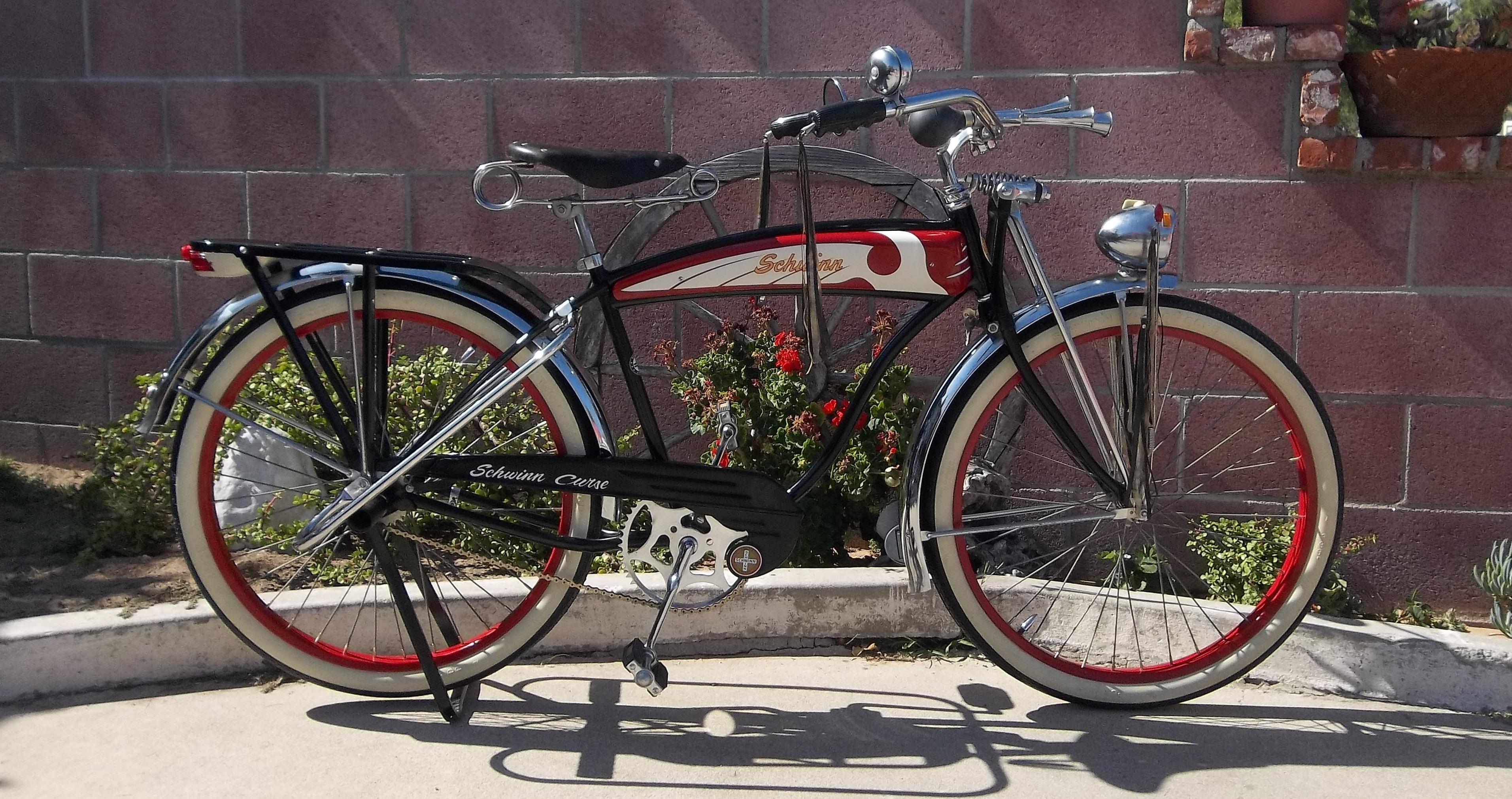
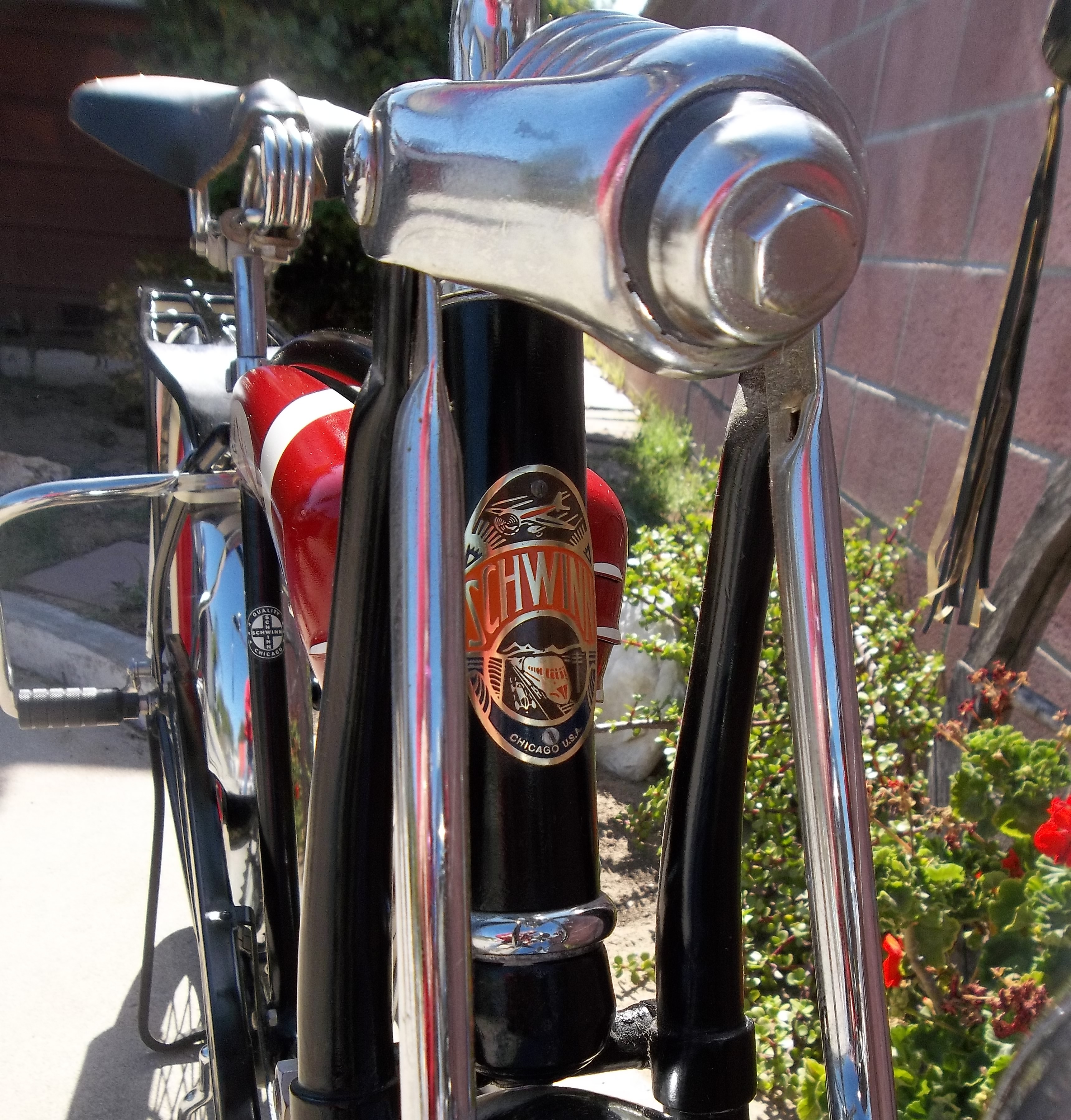

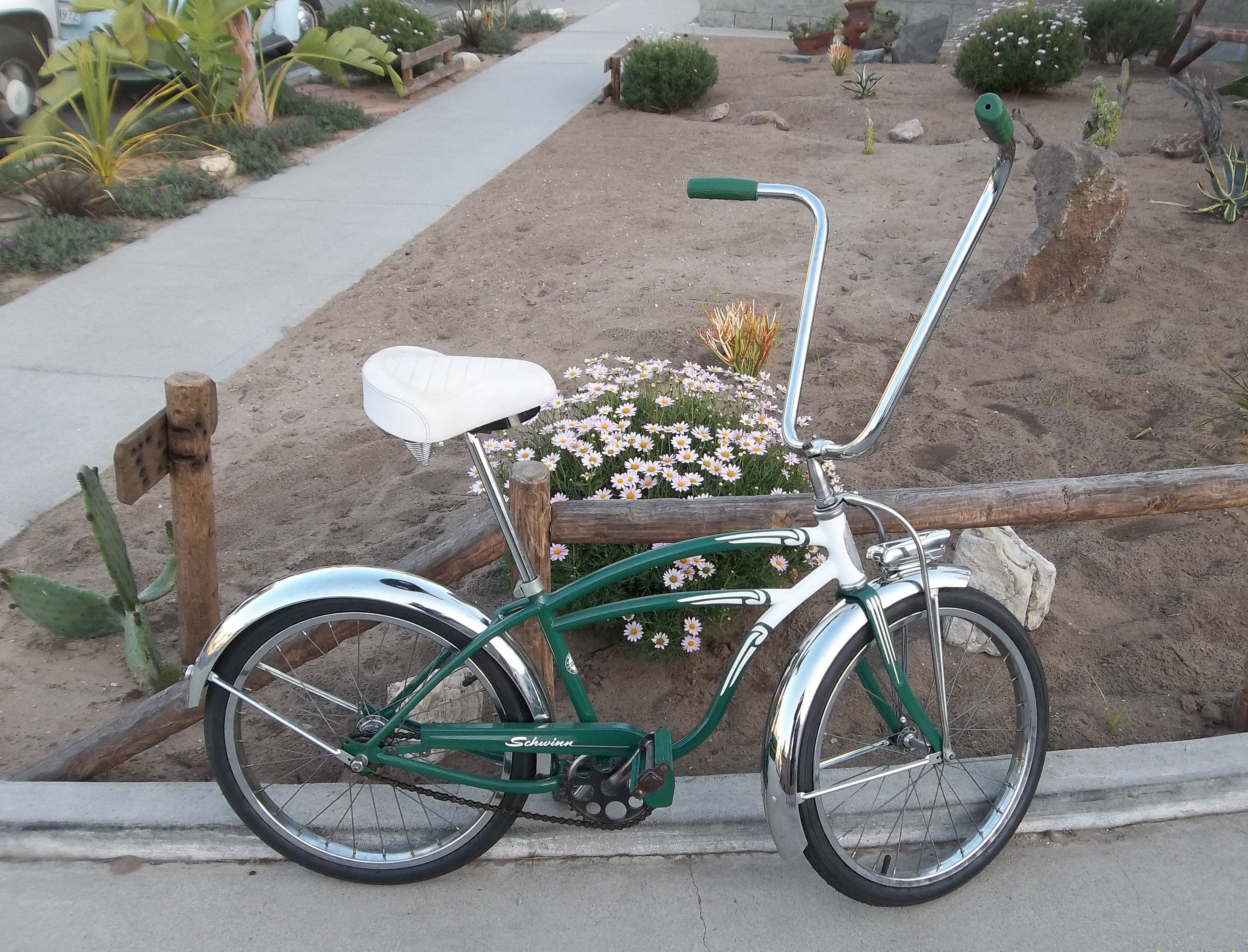
All bicycles on this page are Just for show and not for sale

Motorized Gas or Electric bicycle Conversions & repairs
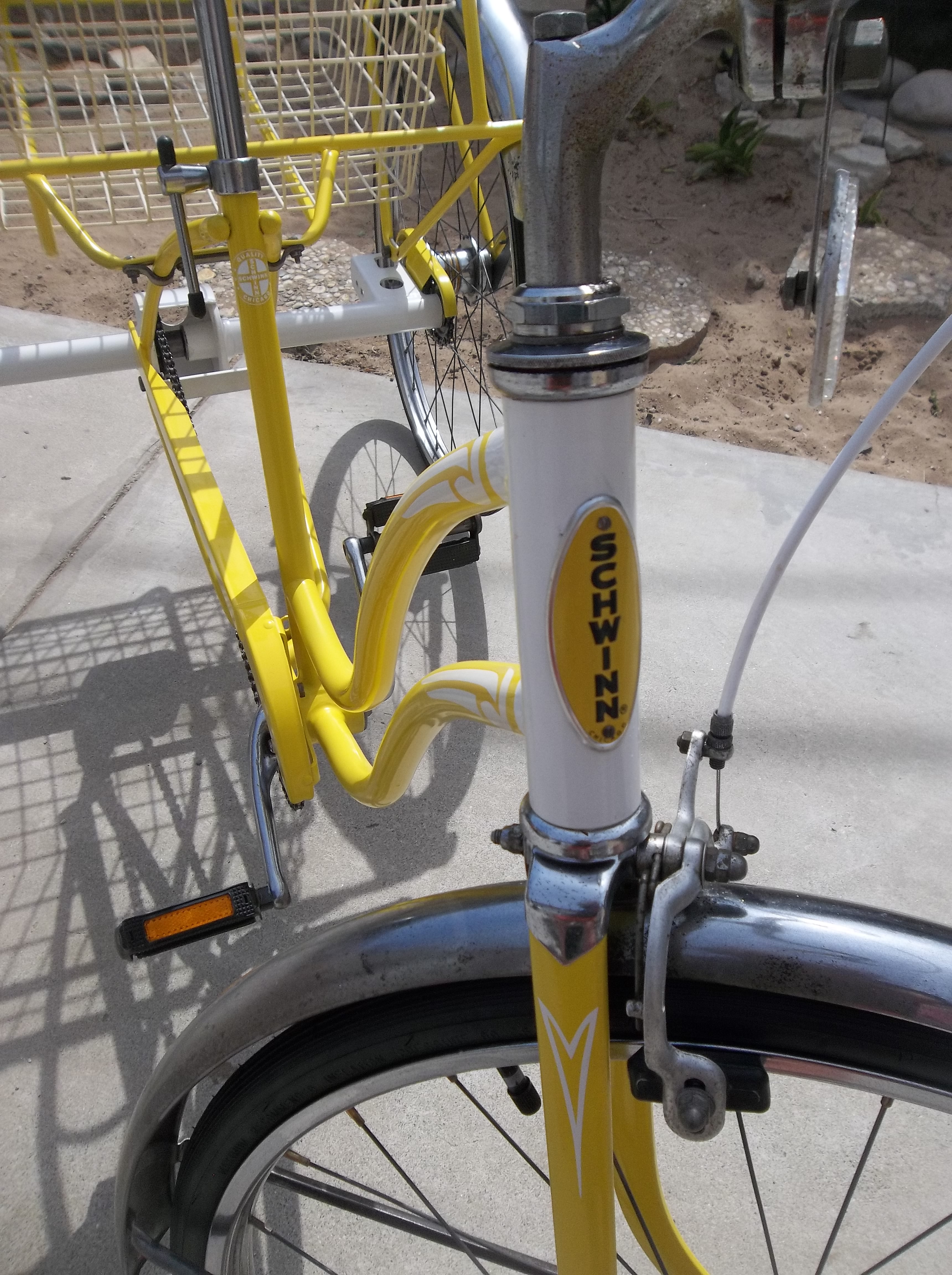

1969 Schwinn Town & Country Two Speed Automatic
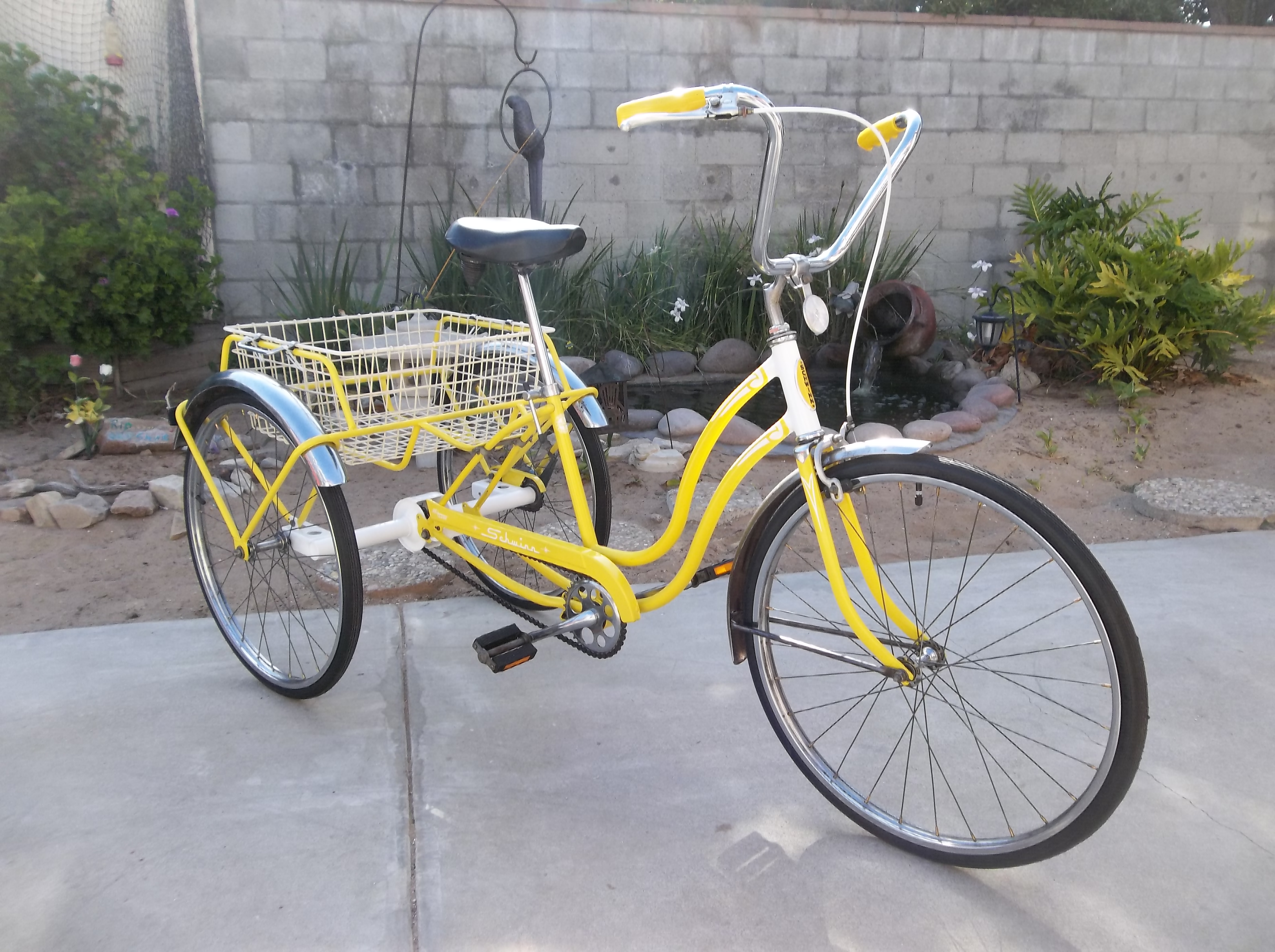
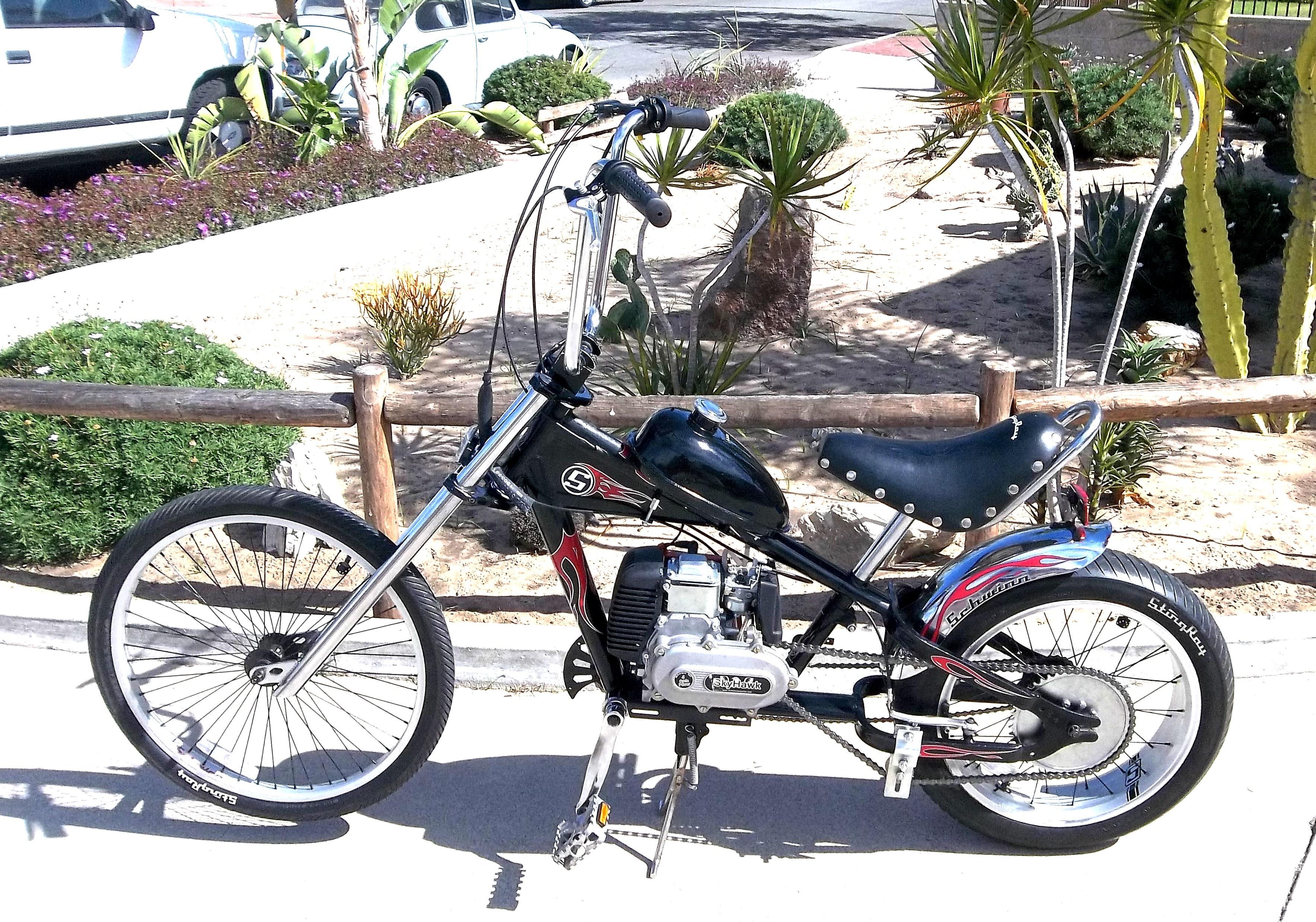
Custom Built Gas and Electric Bicycle Conversions
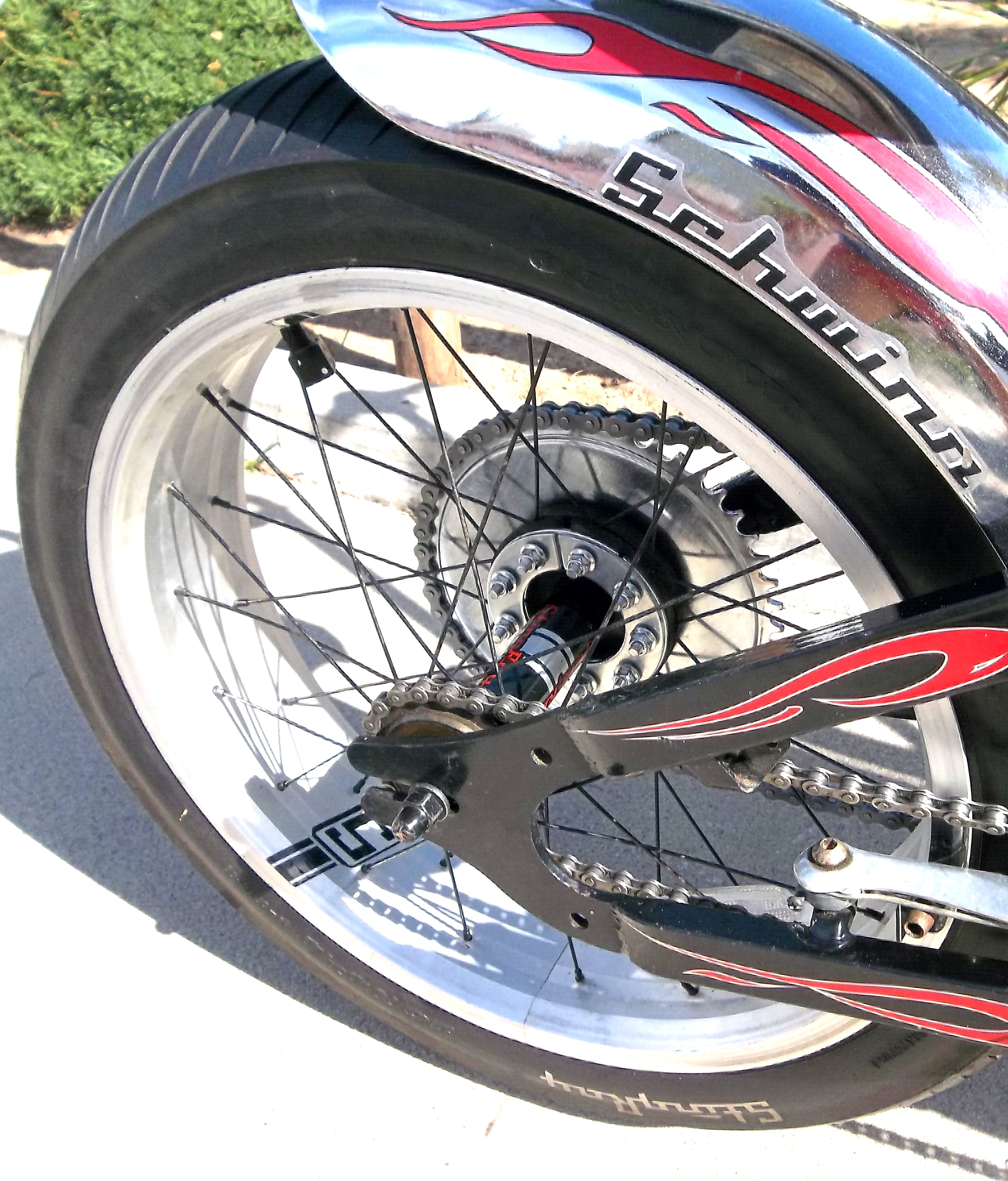

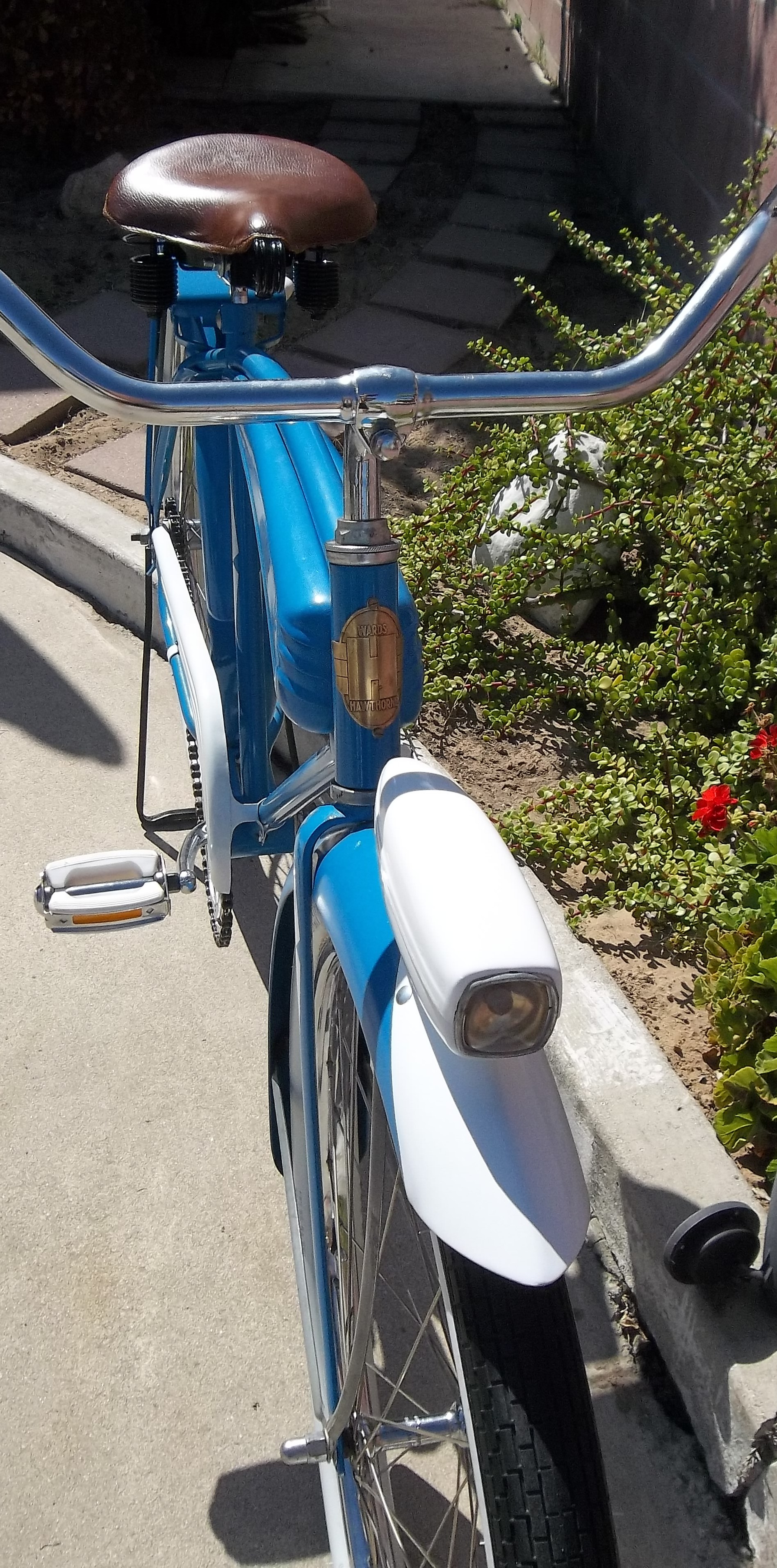
Montgomery Ward’s Hawthorne Comet Pre-War Custom
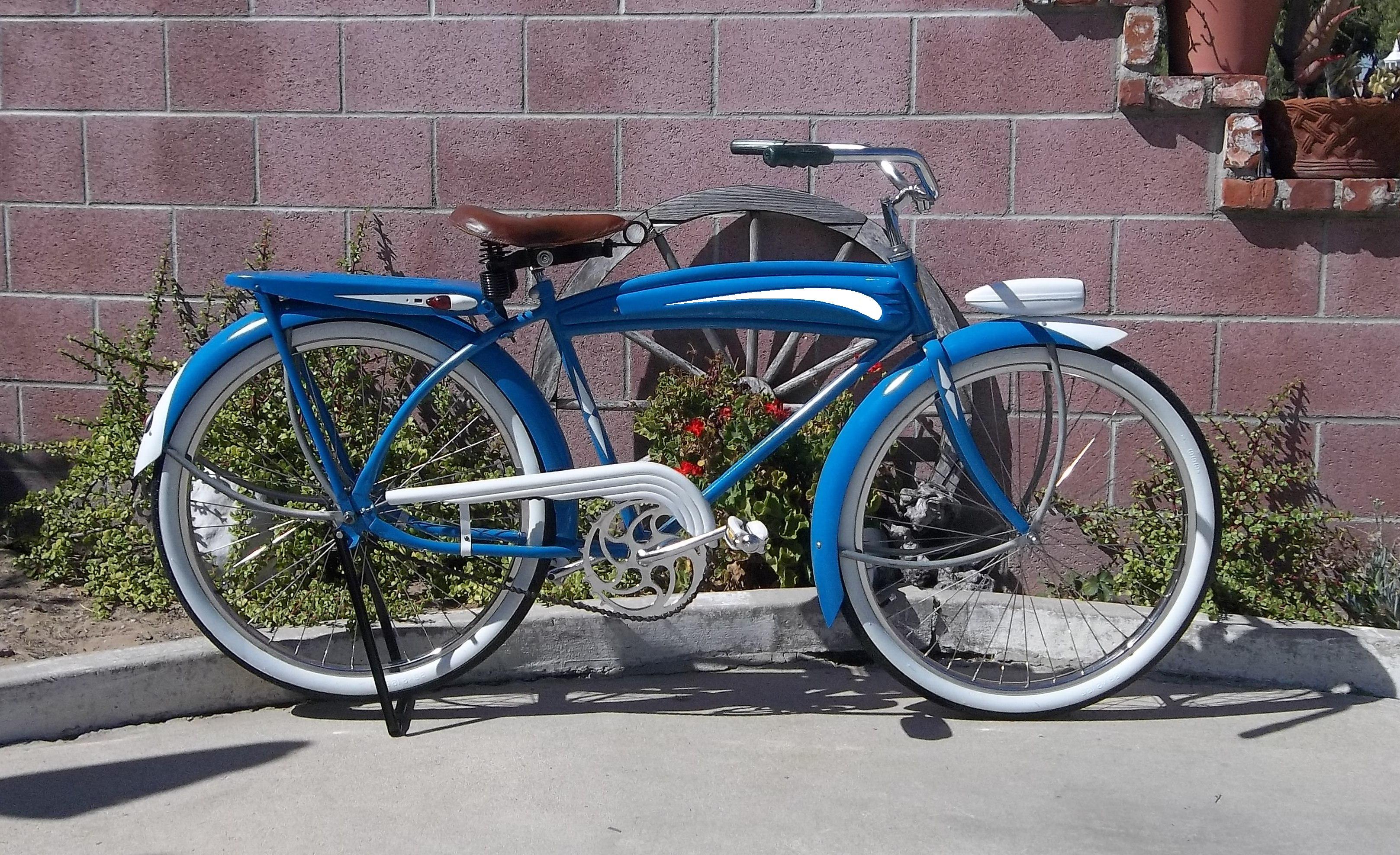
Free Agent Mini Cross Aluminum Alloy Custom Street Ripper
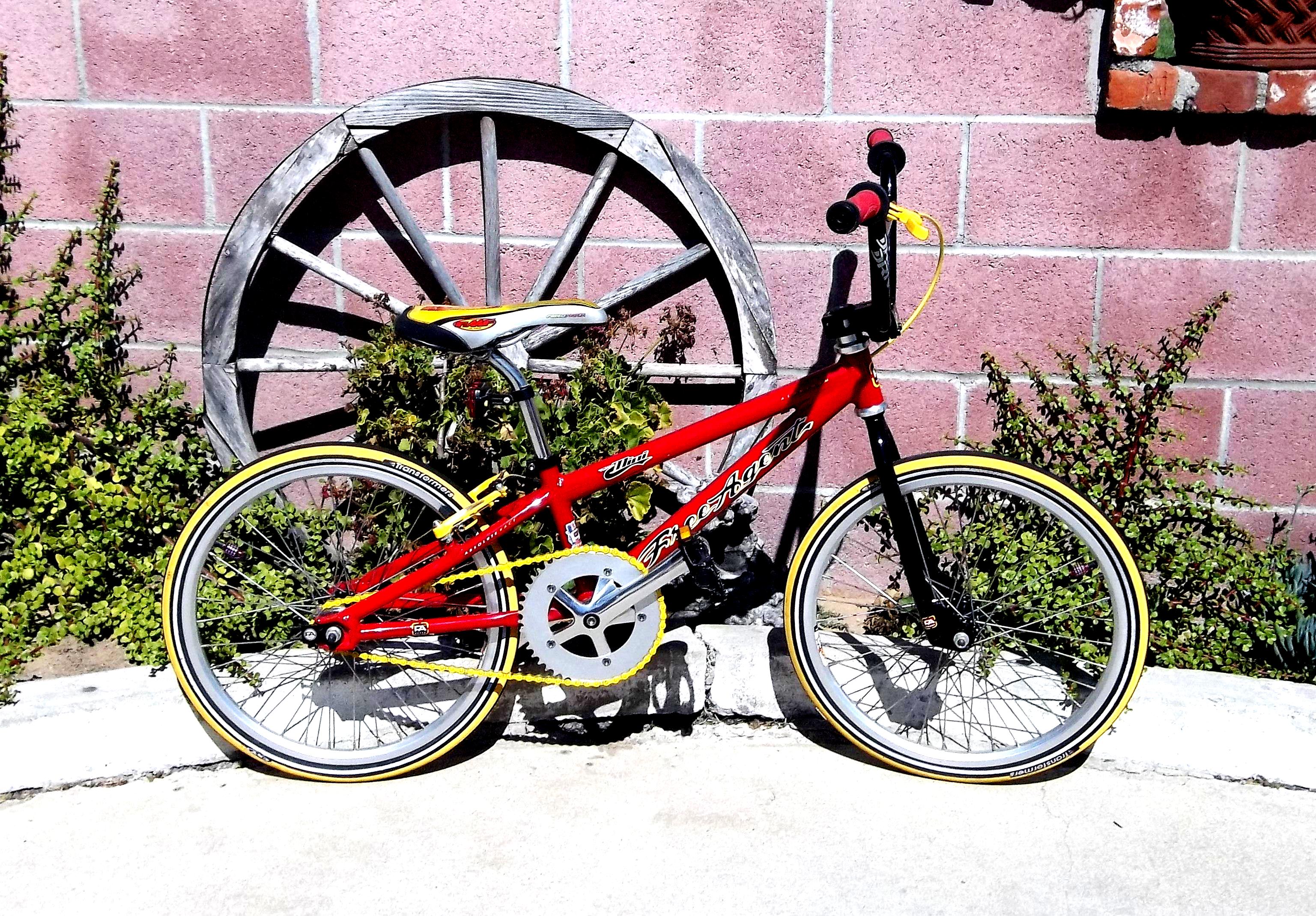
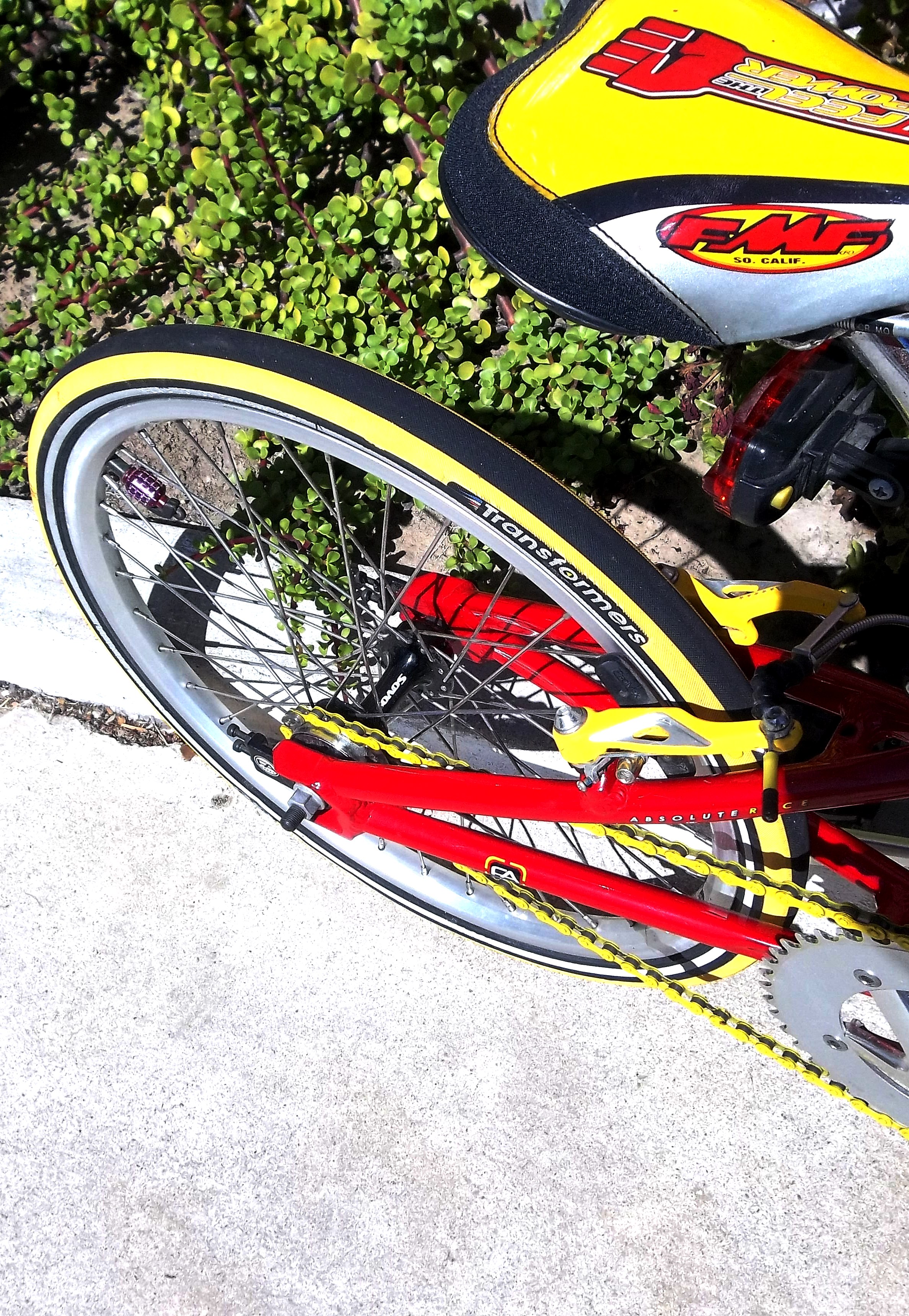
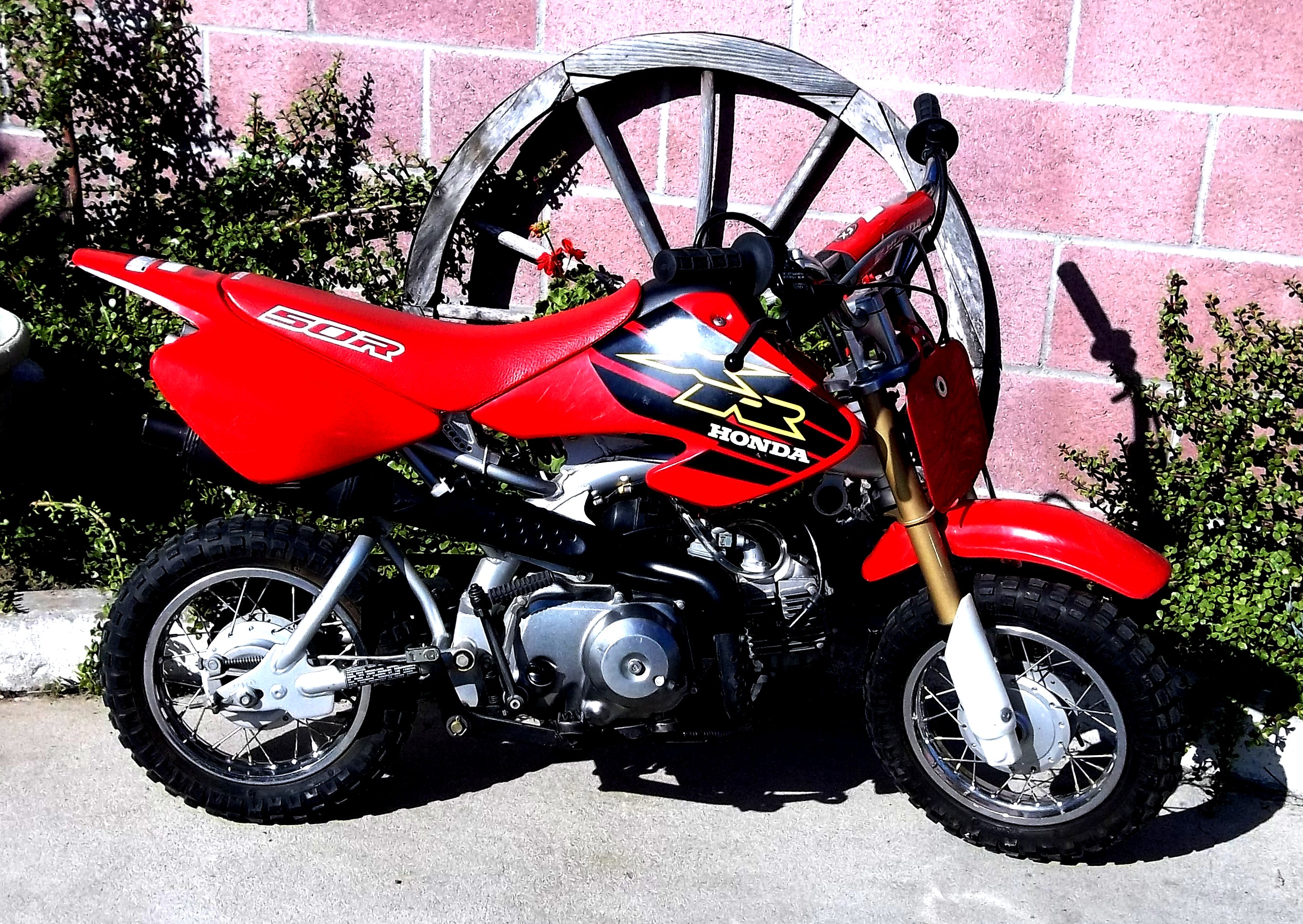
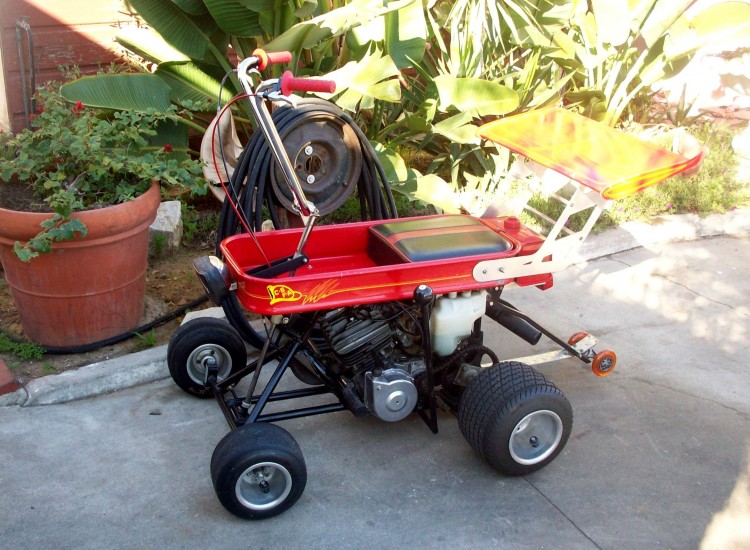
We service all 2 and 4 stroke off Road Toy's